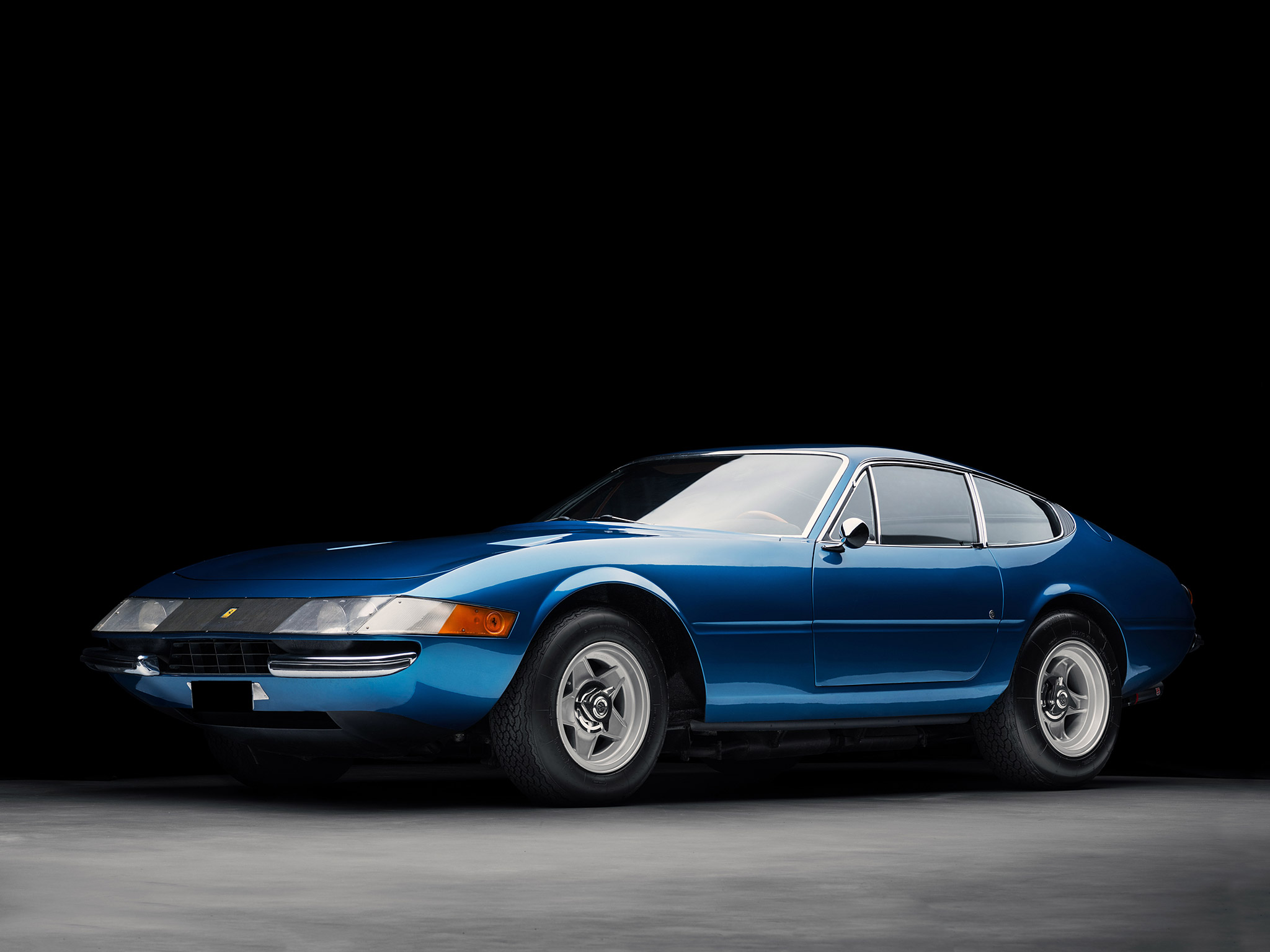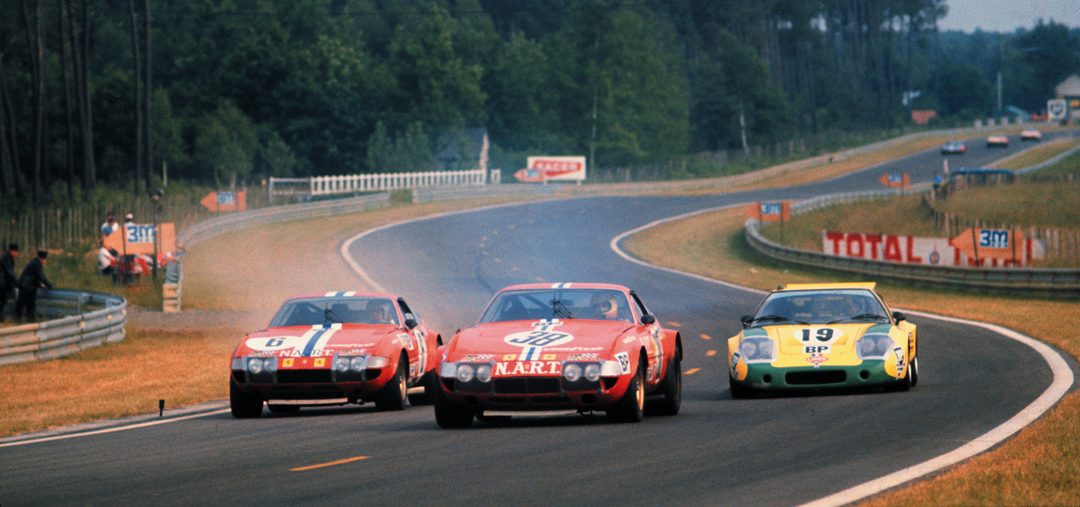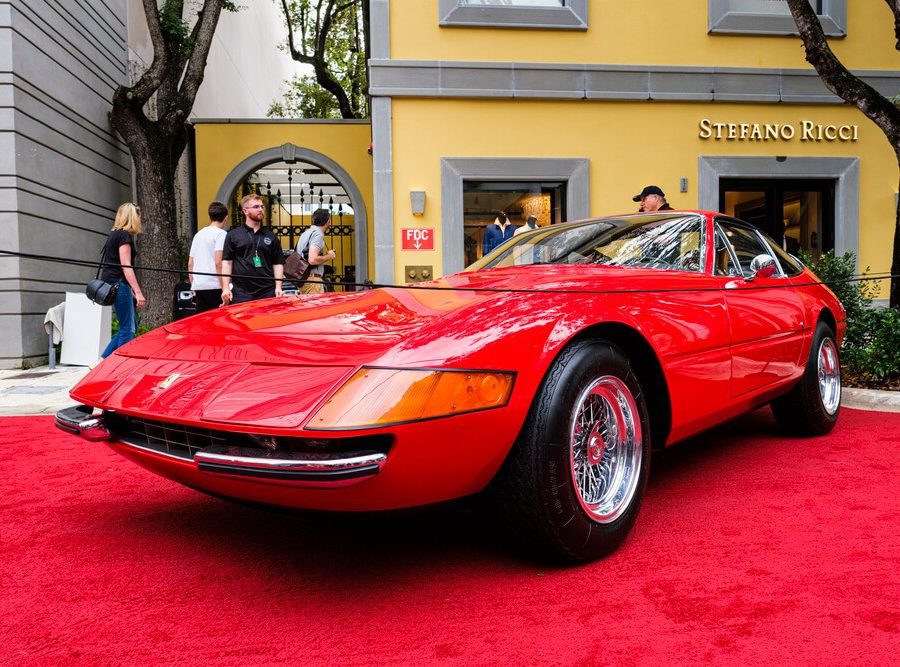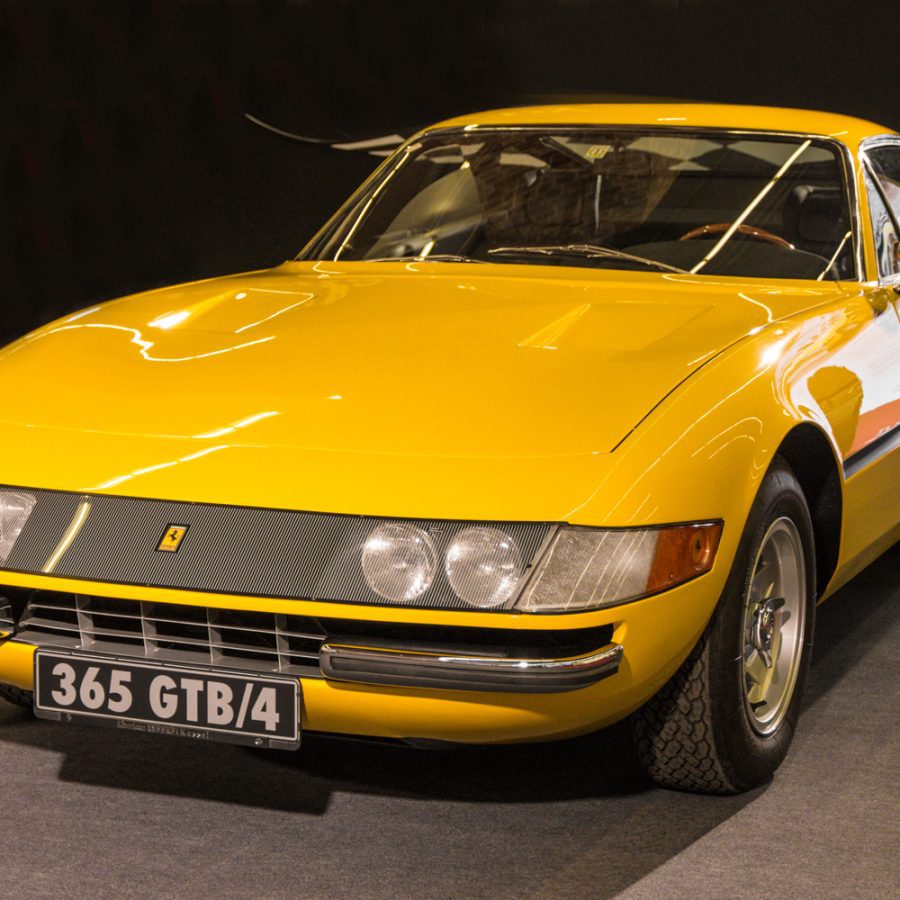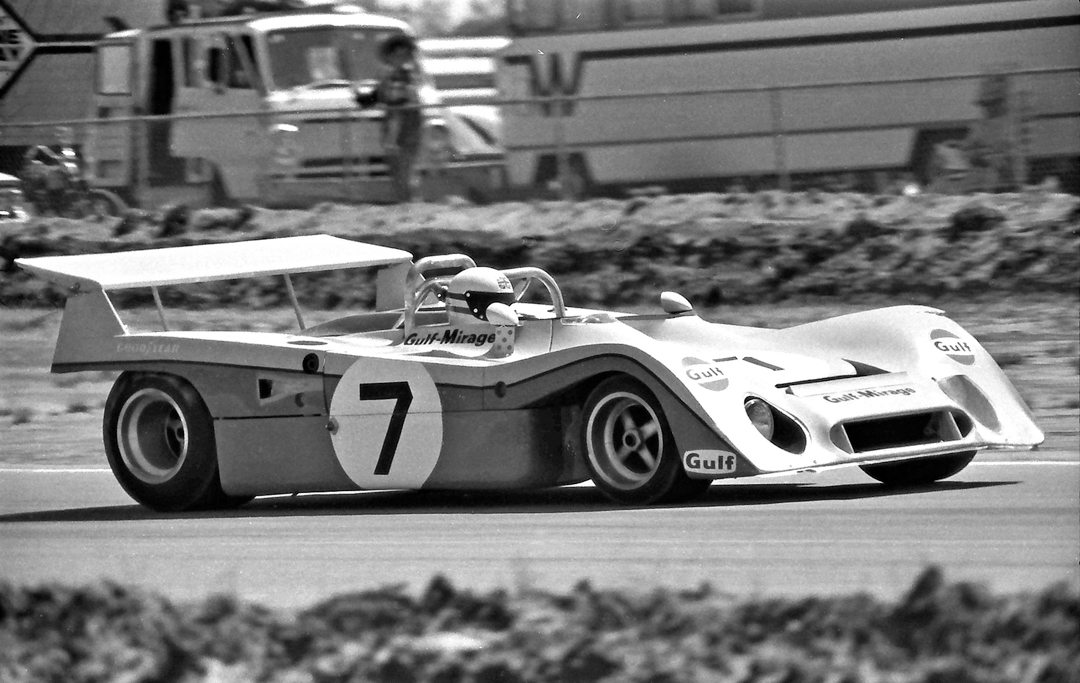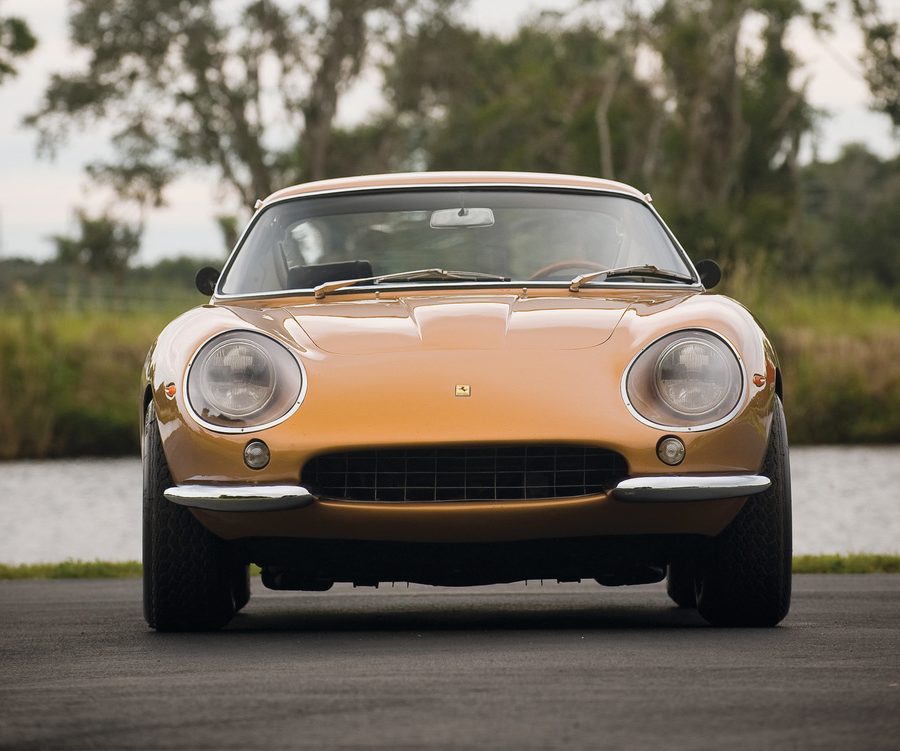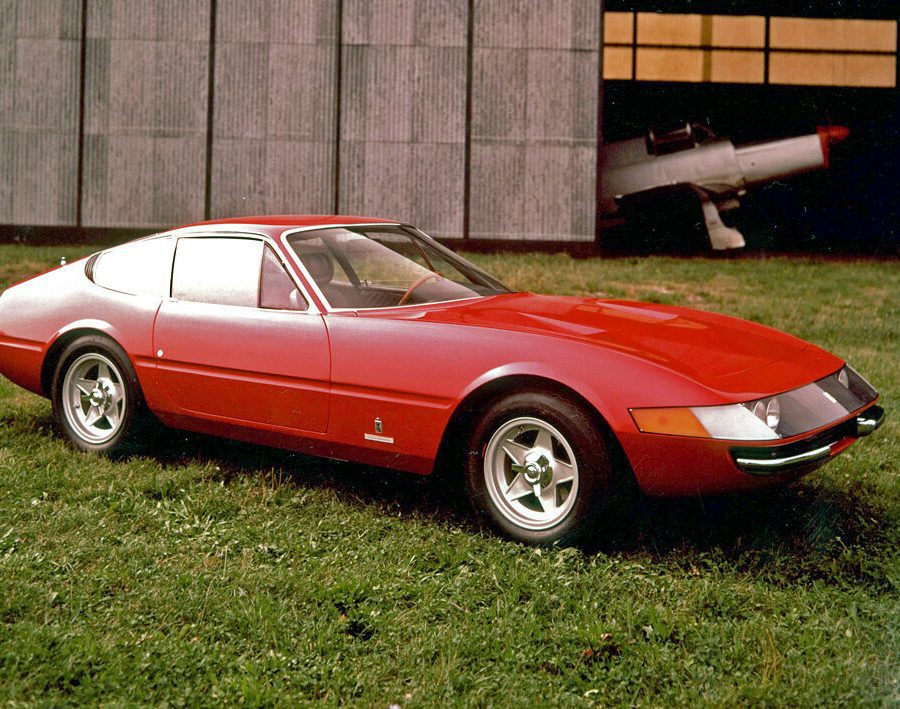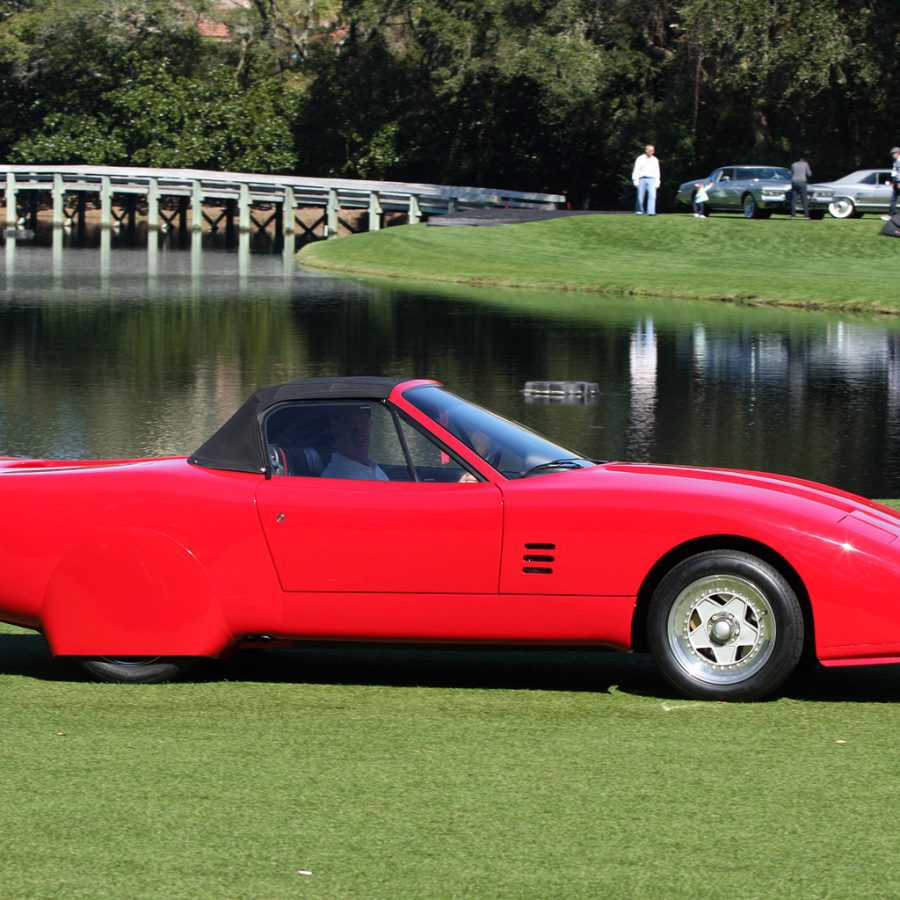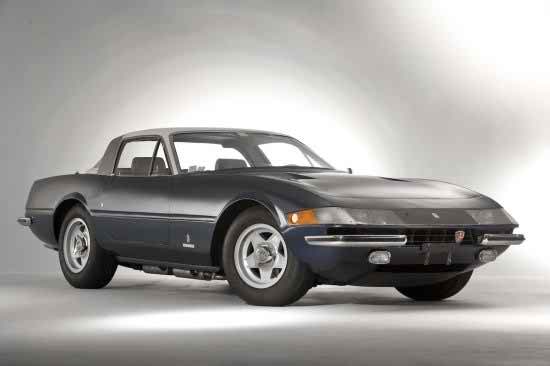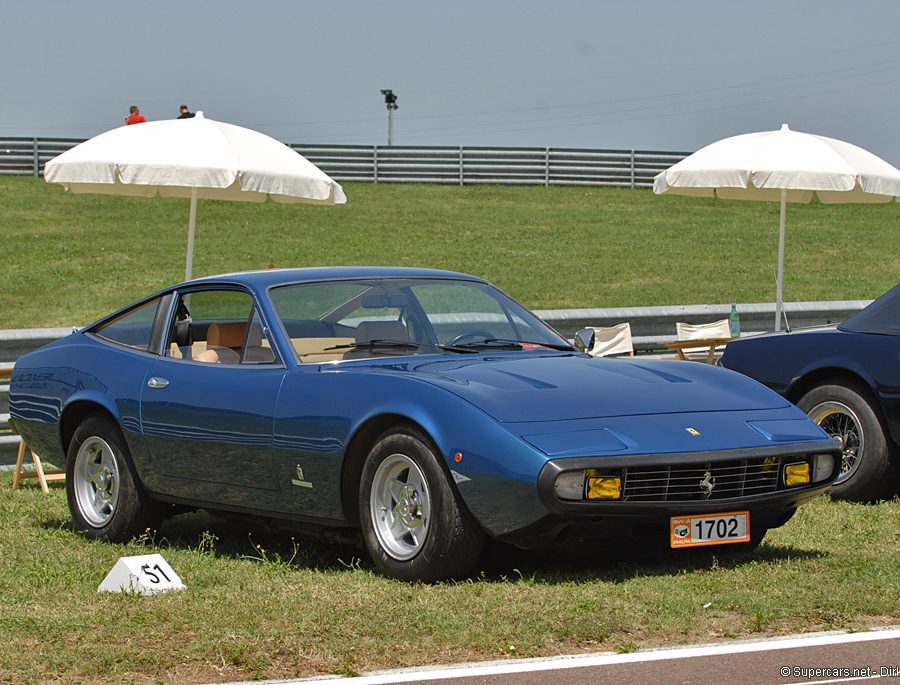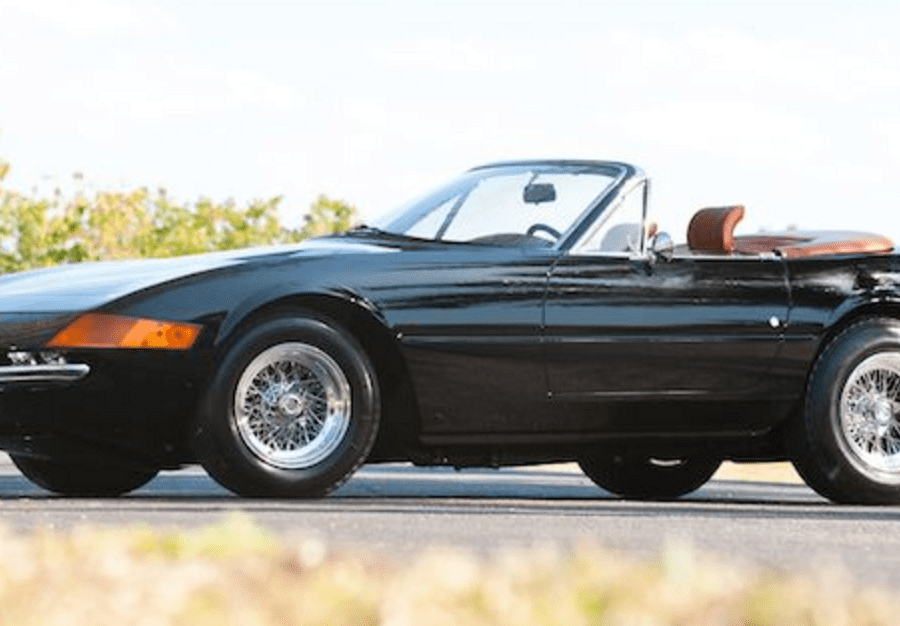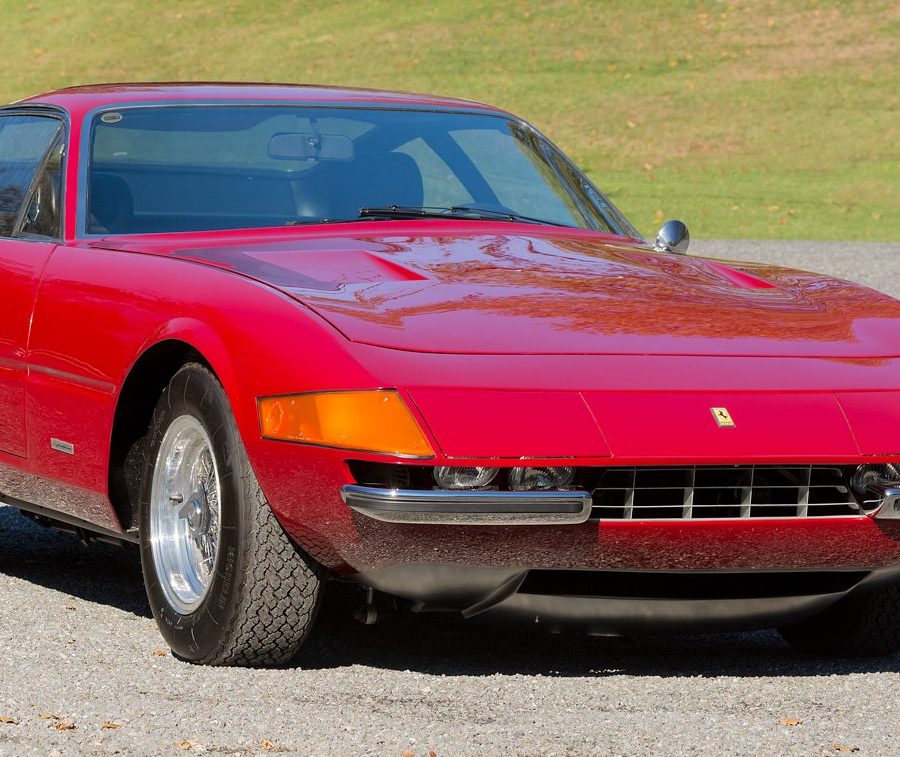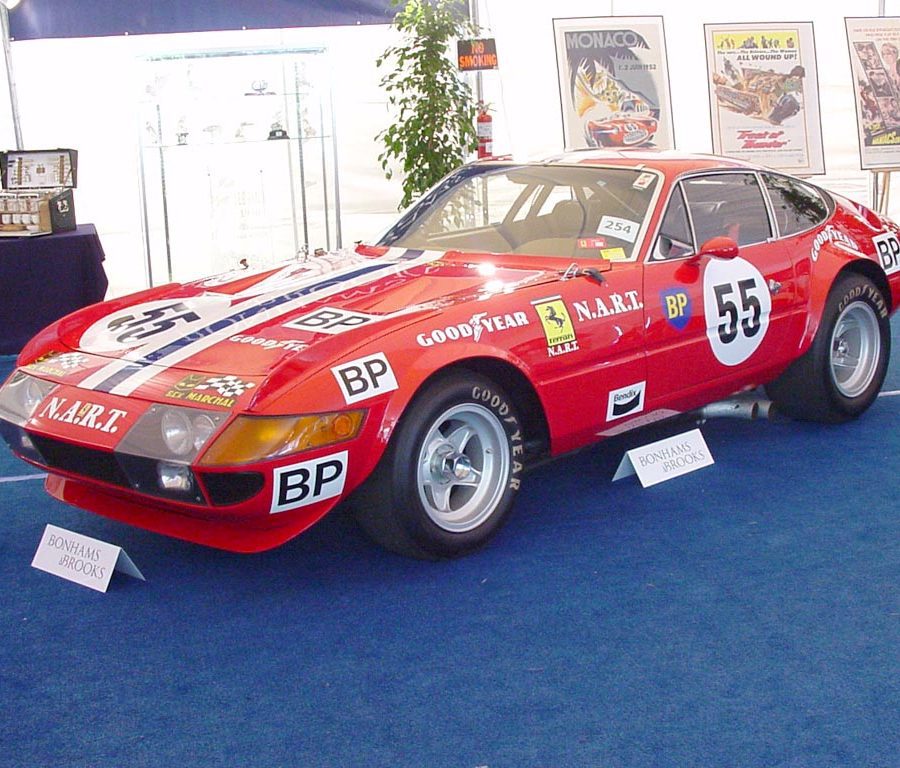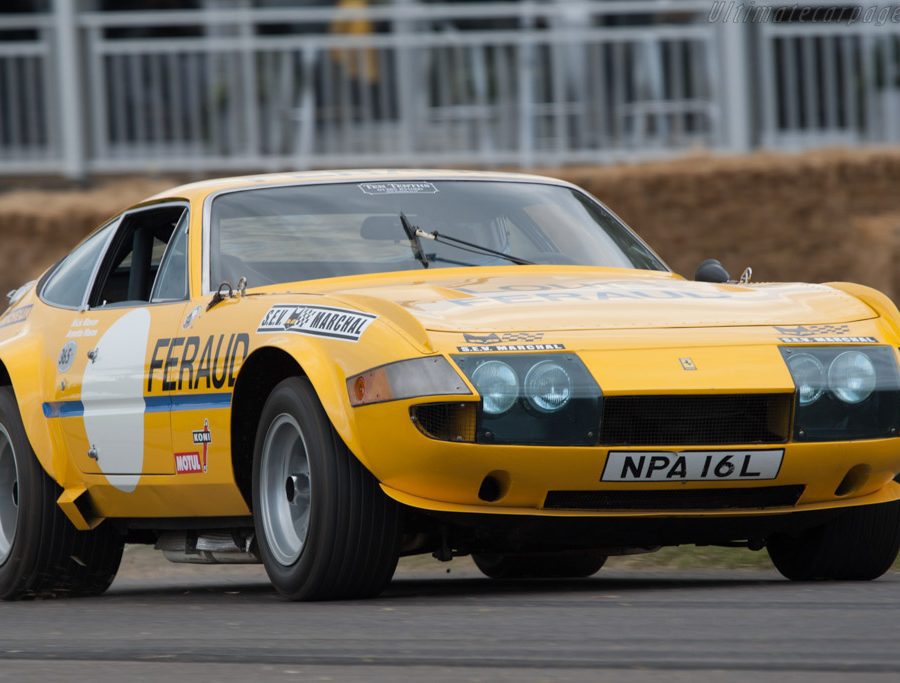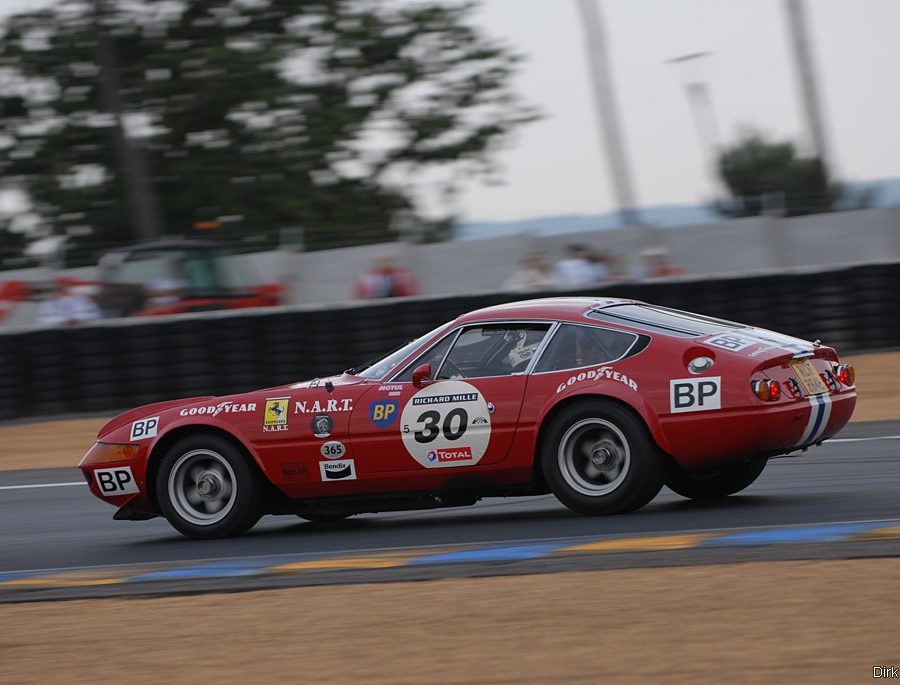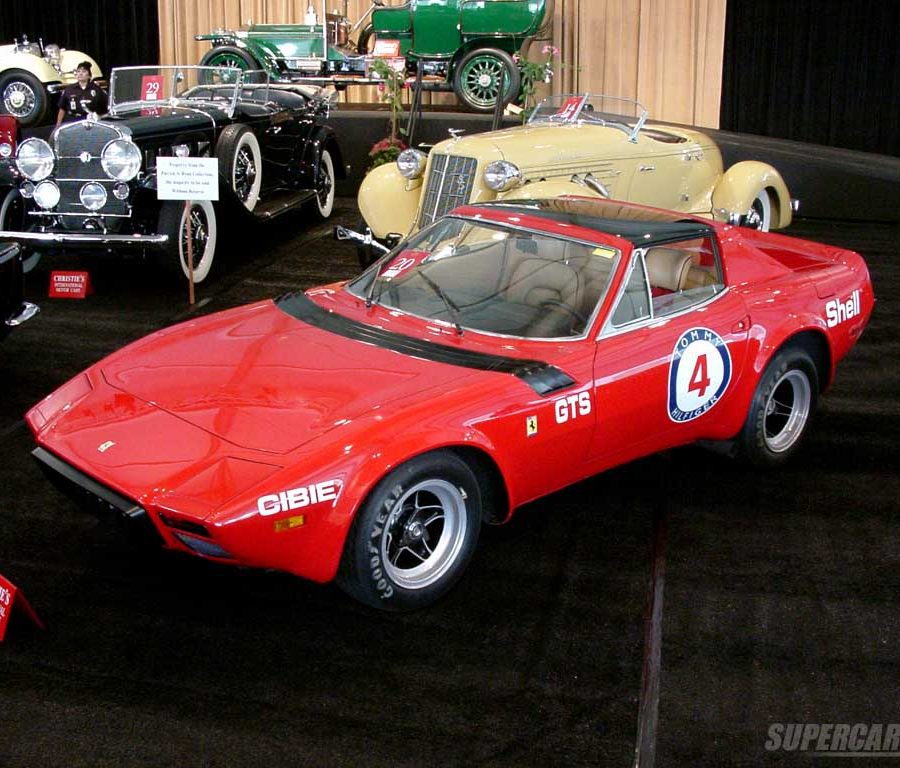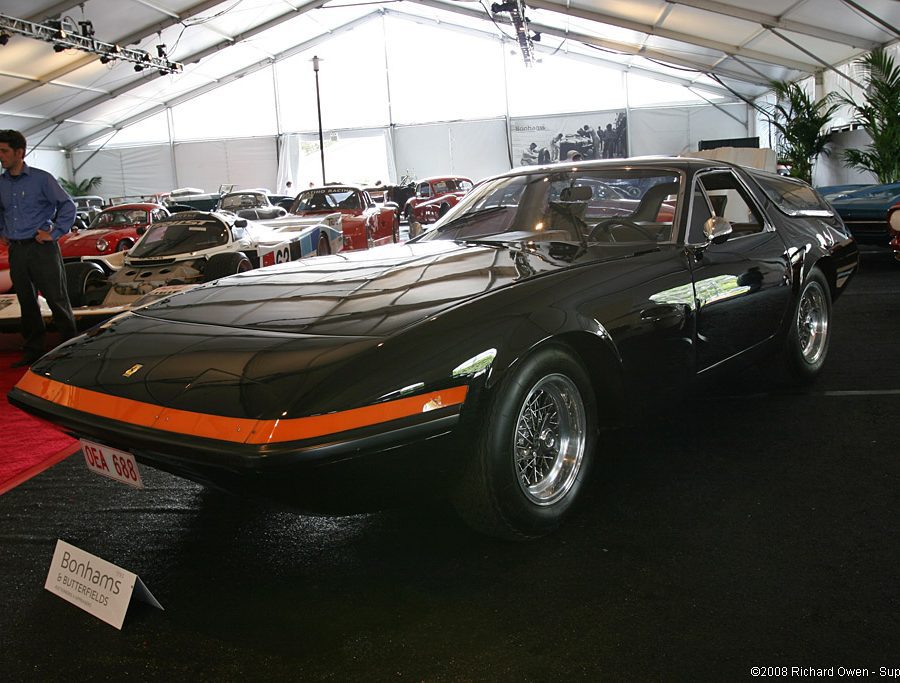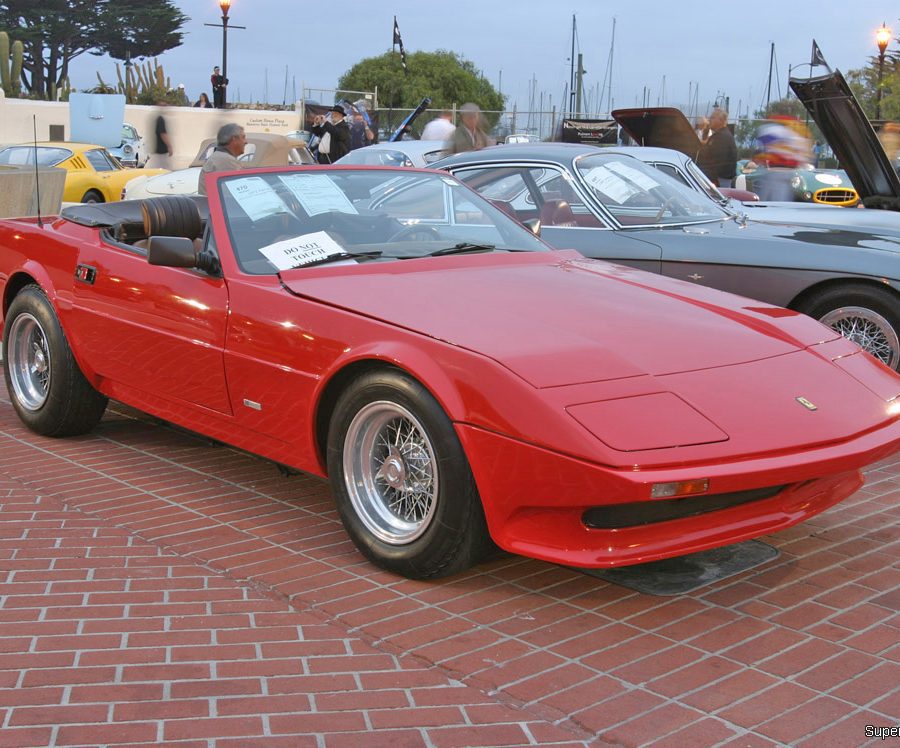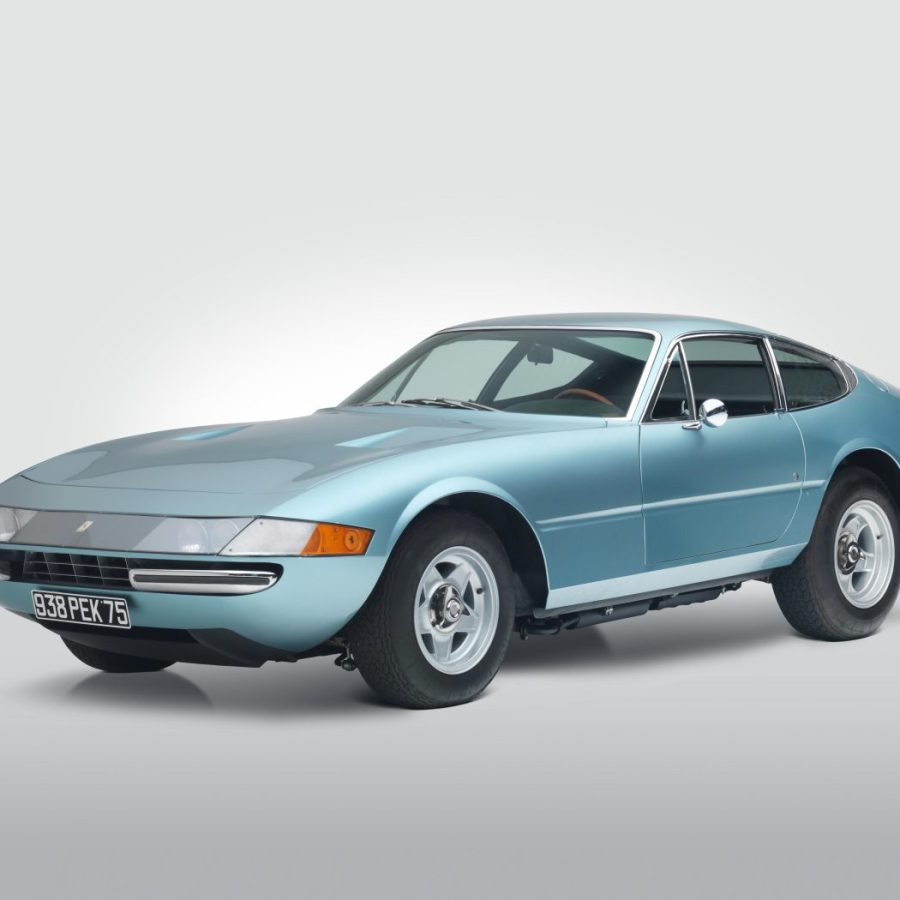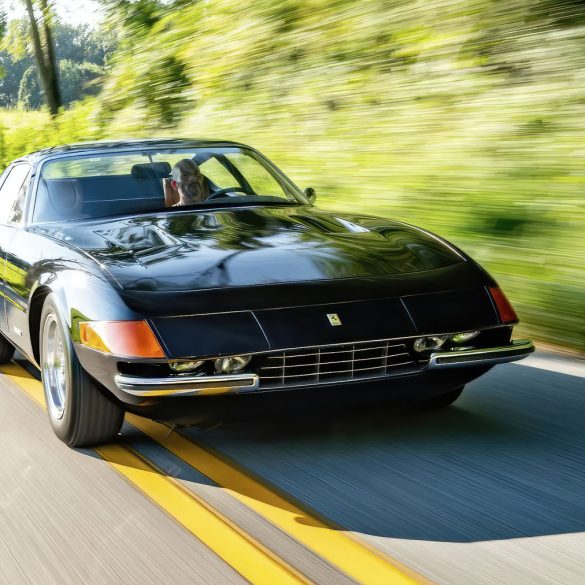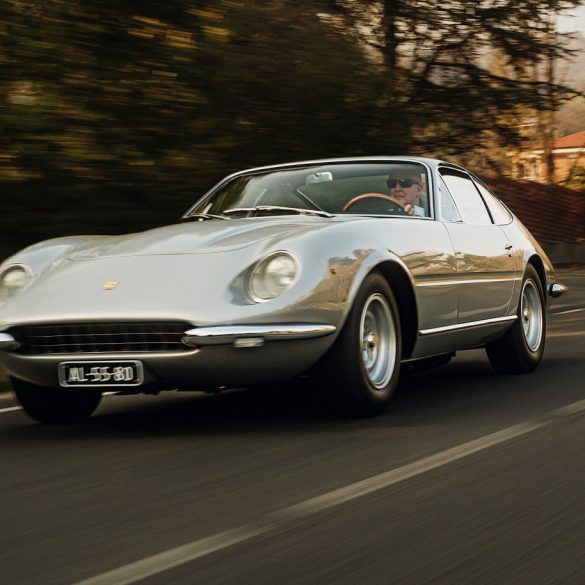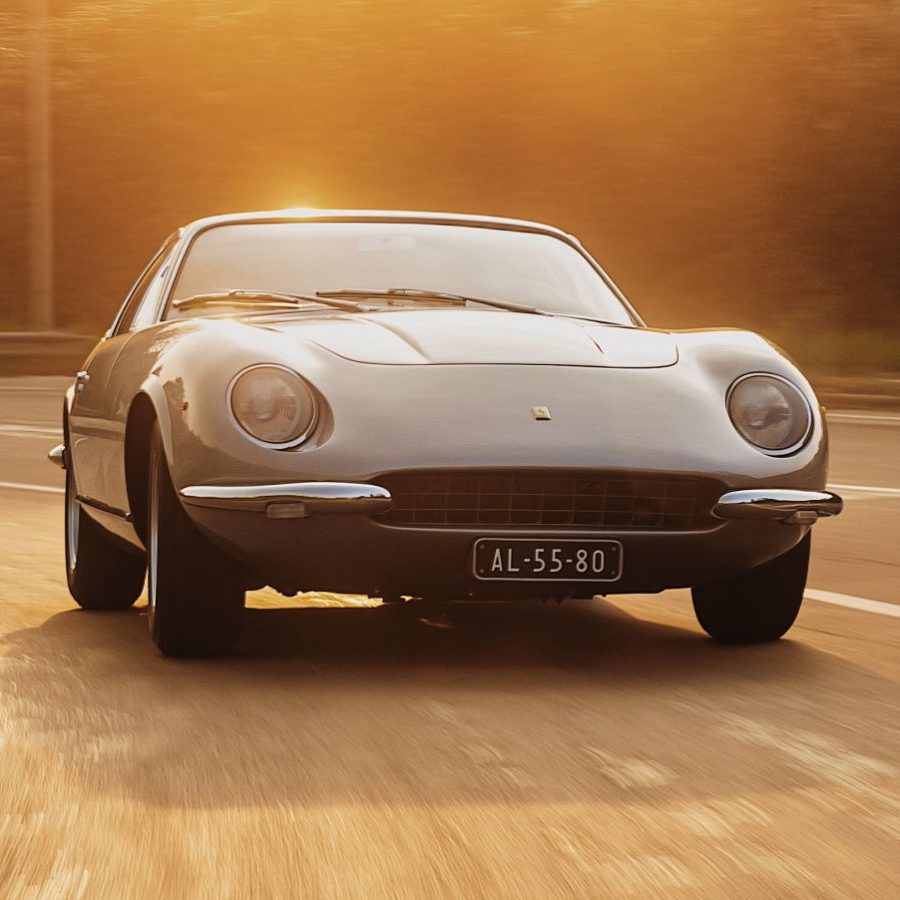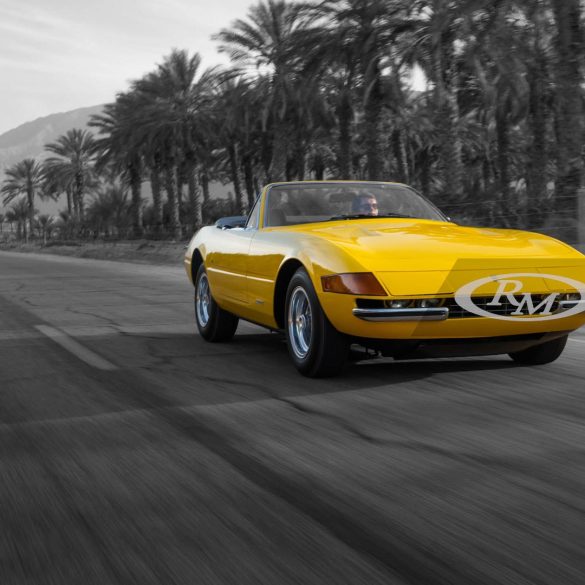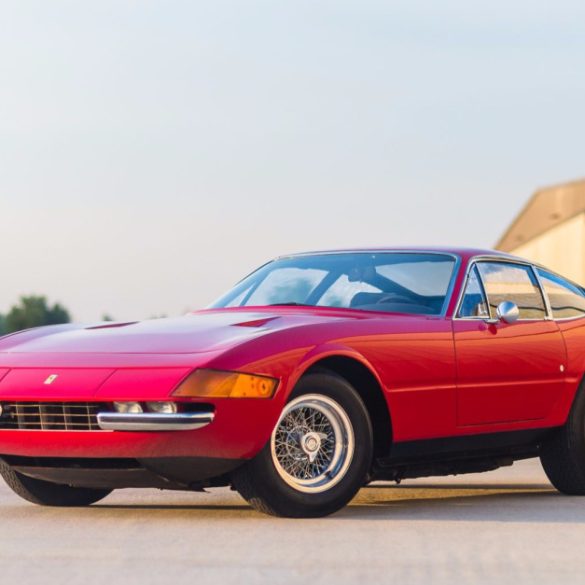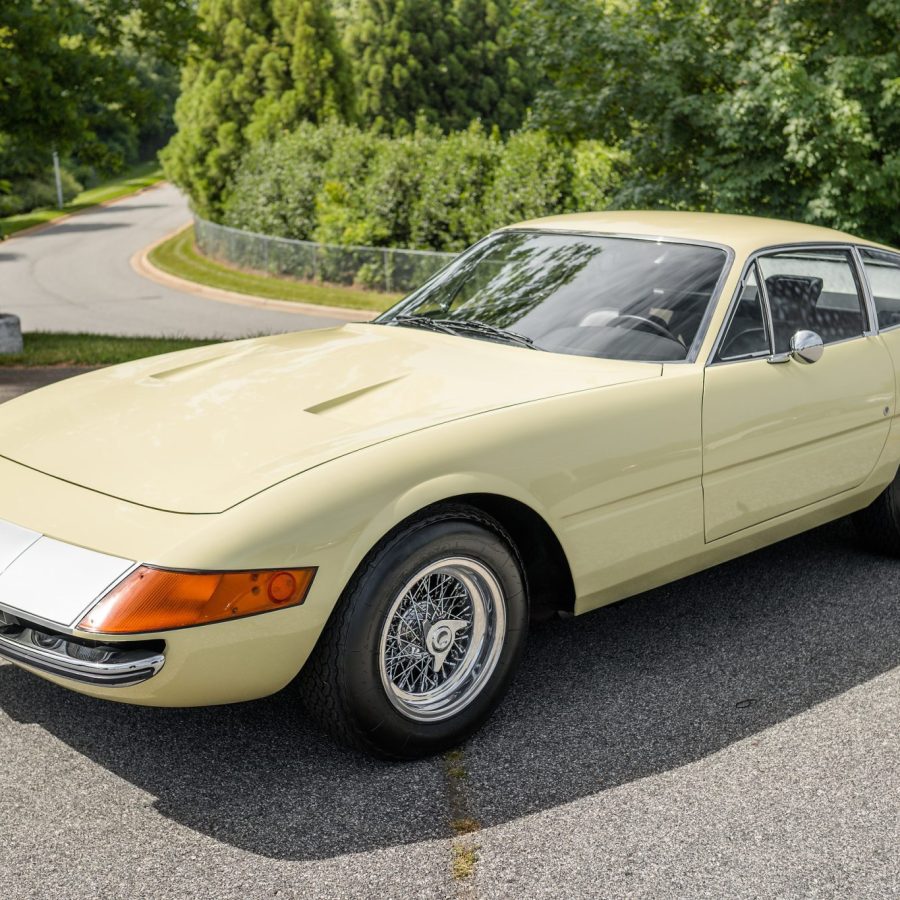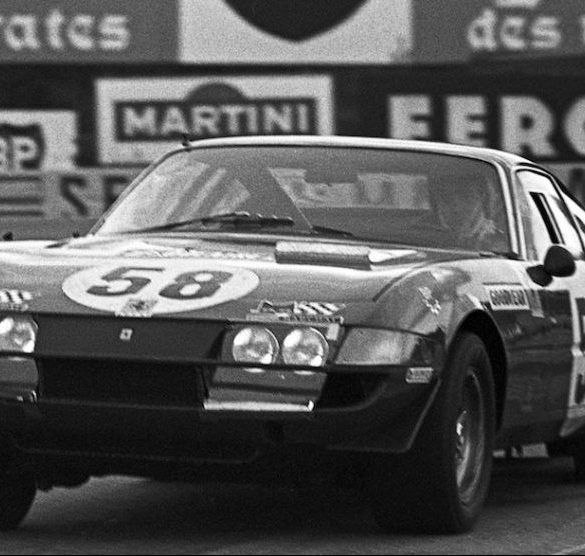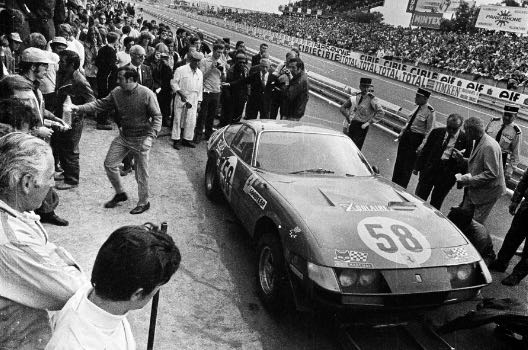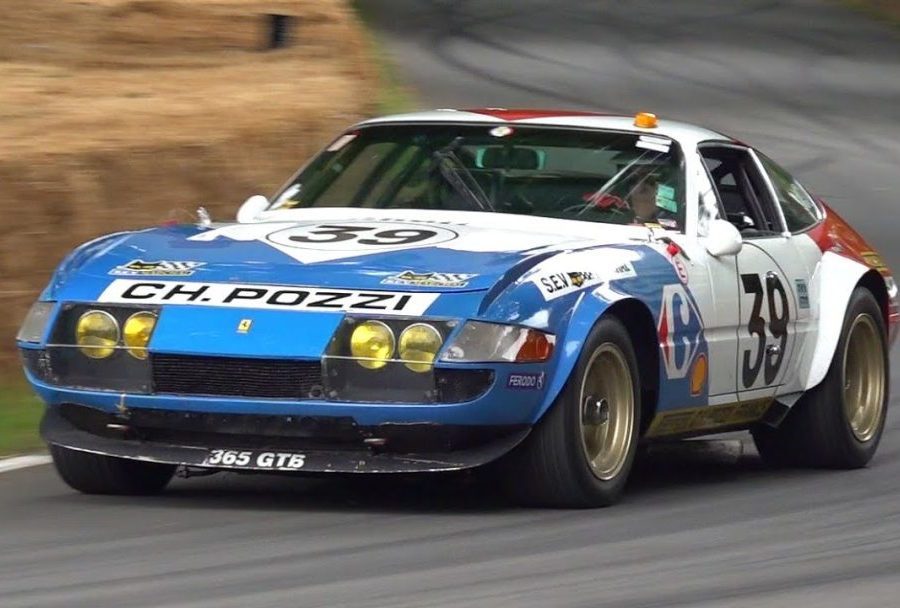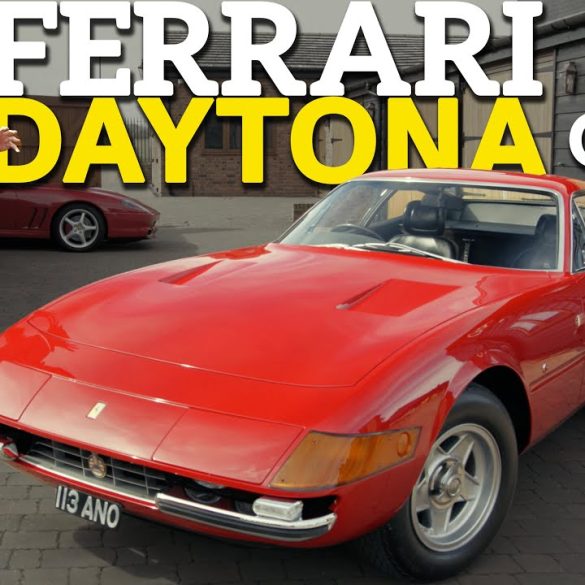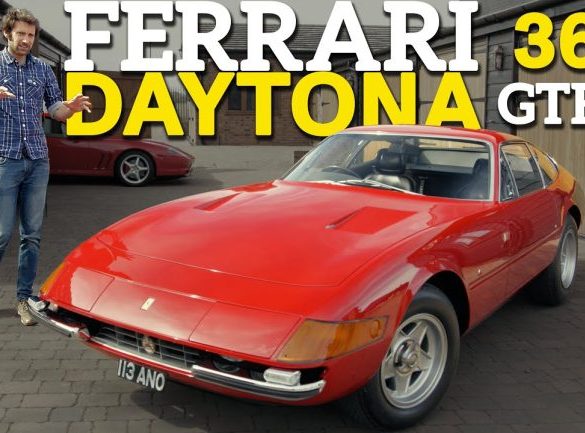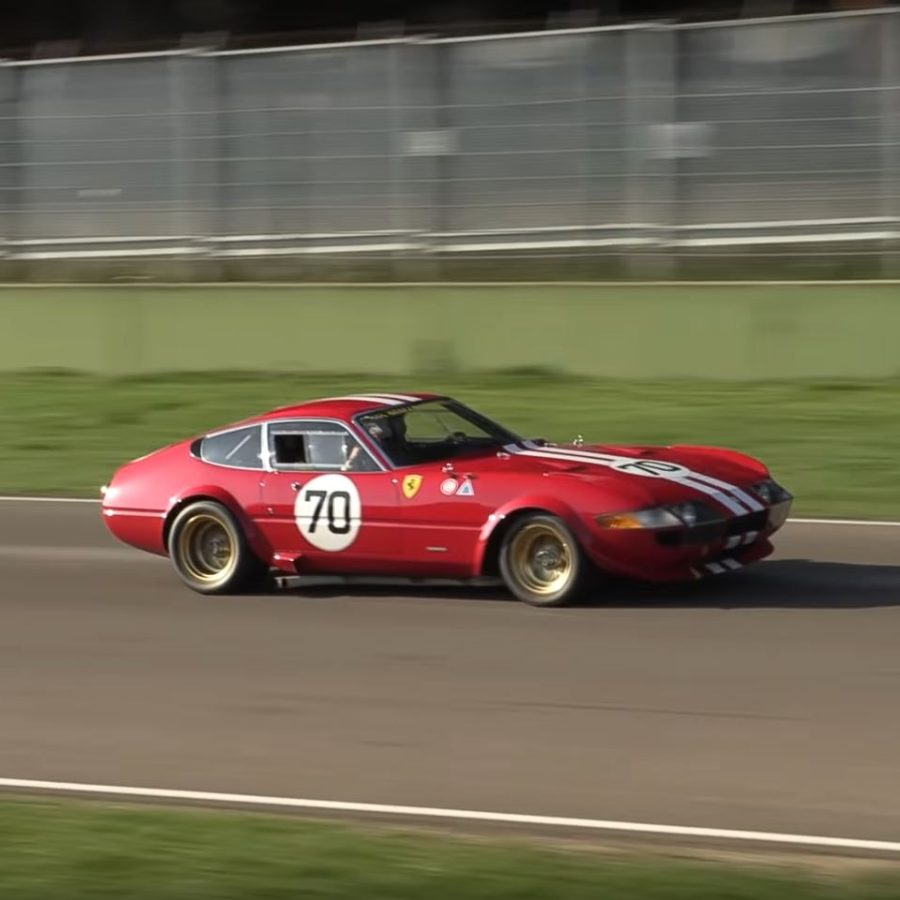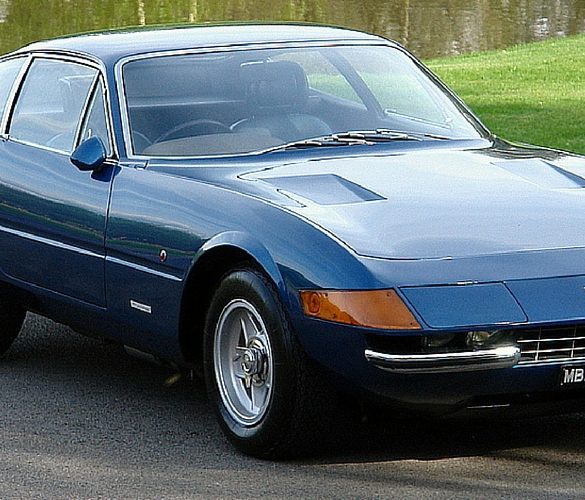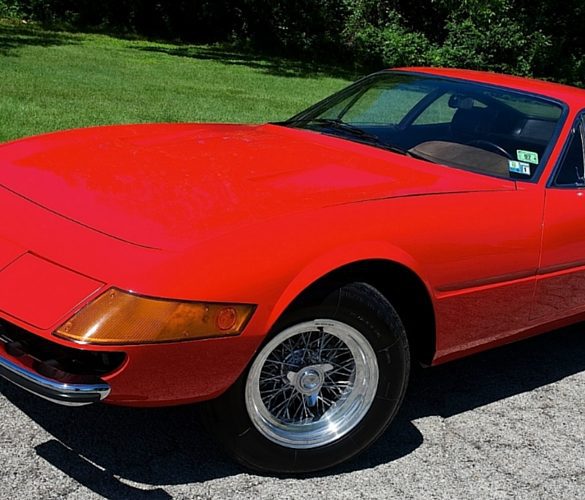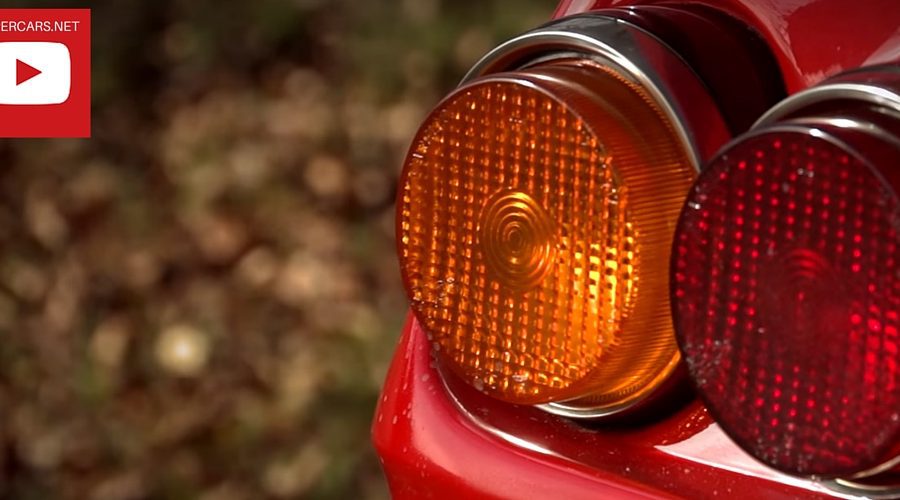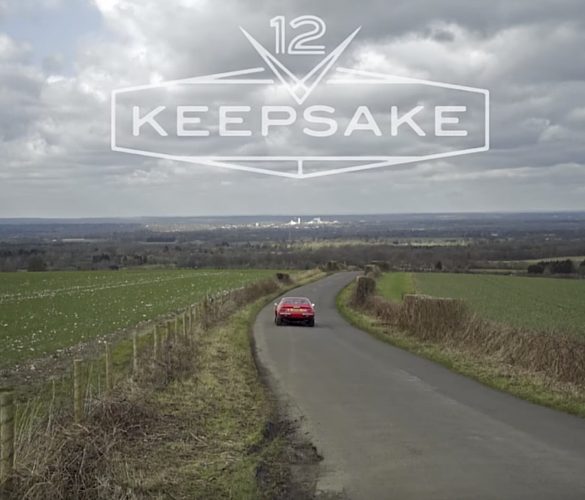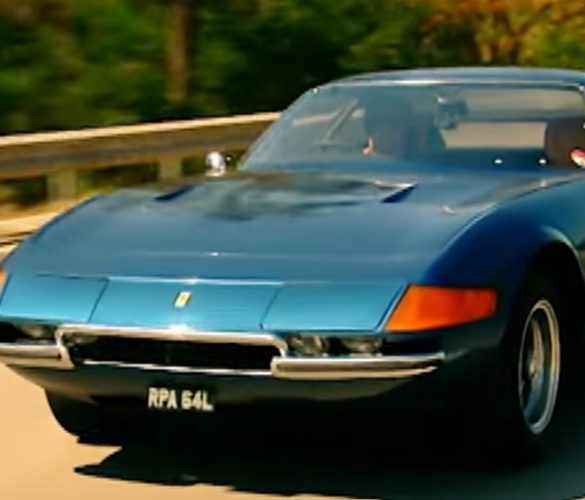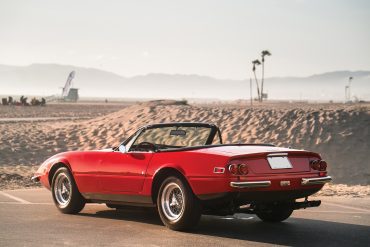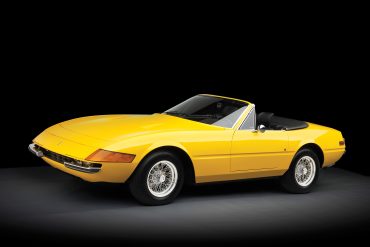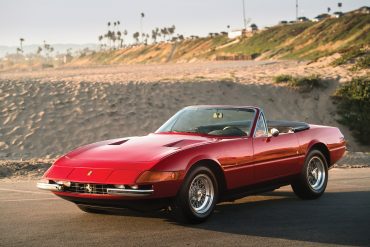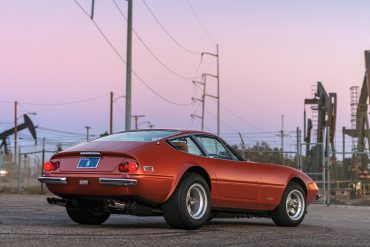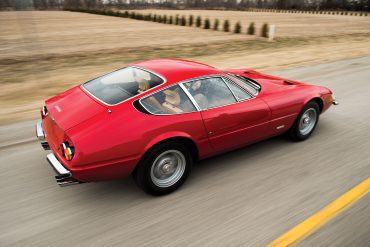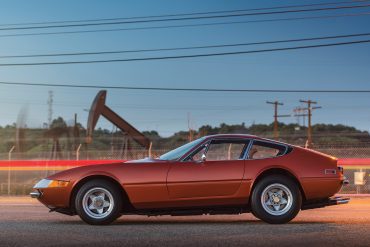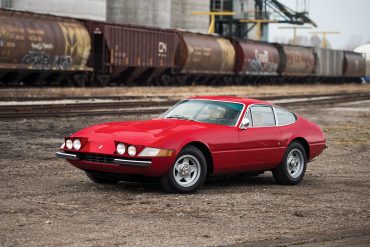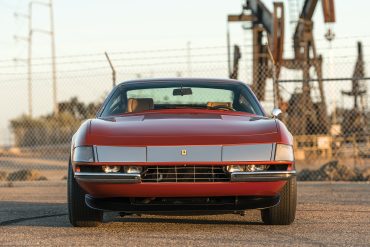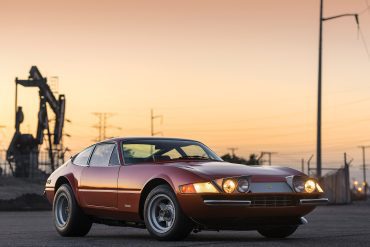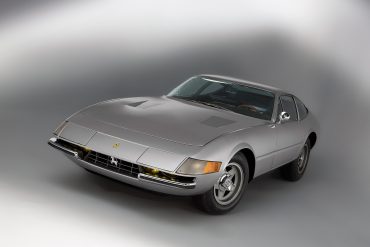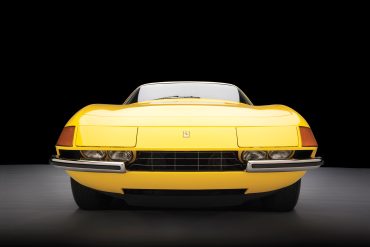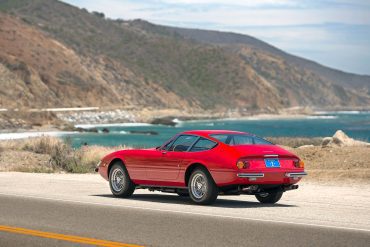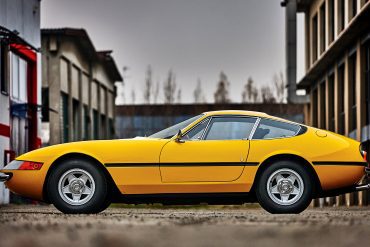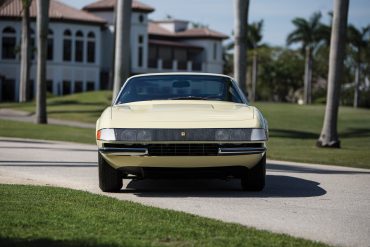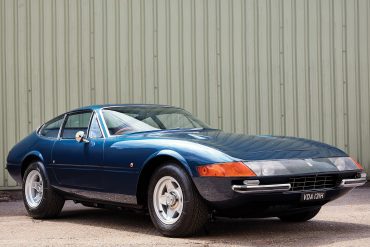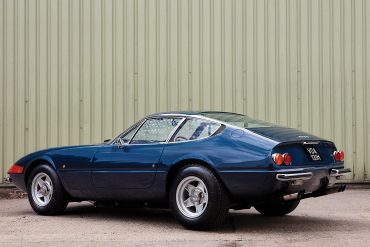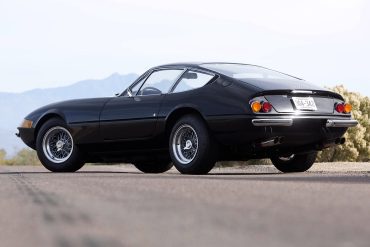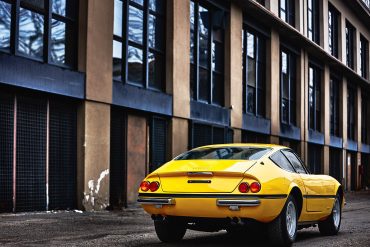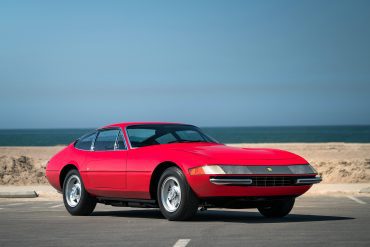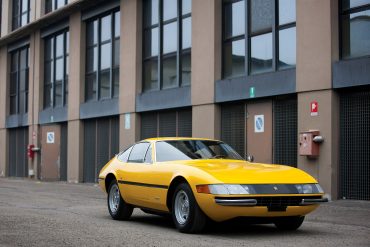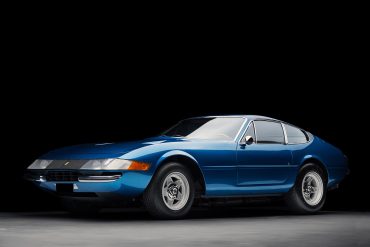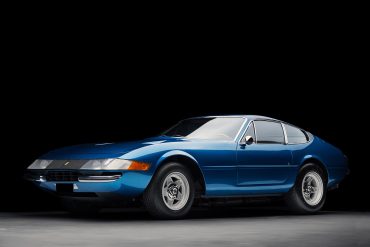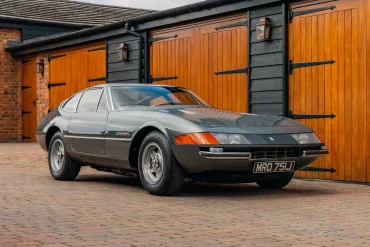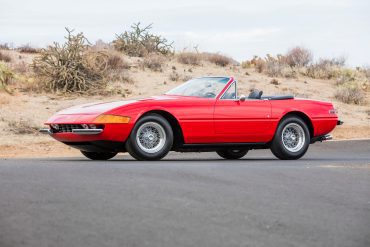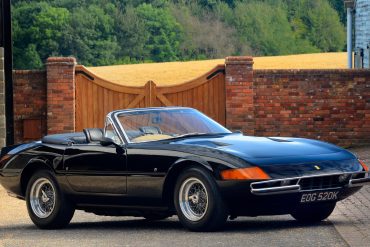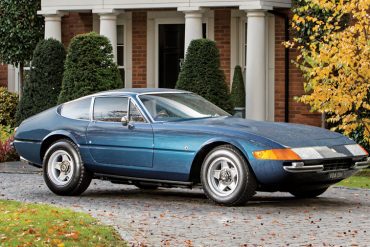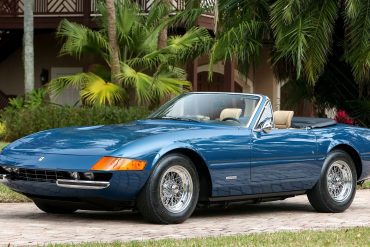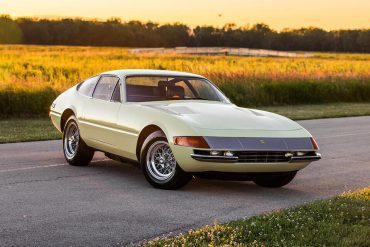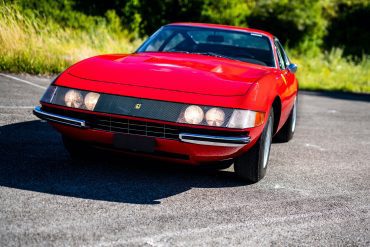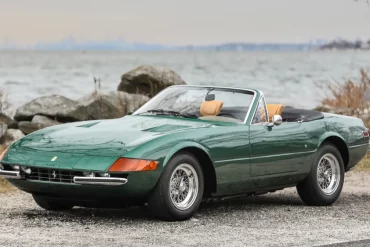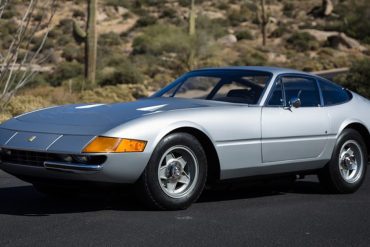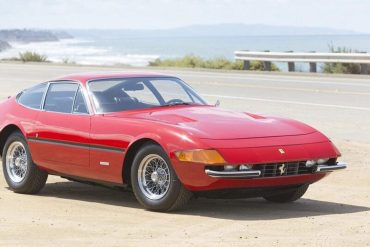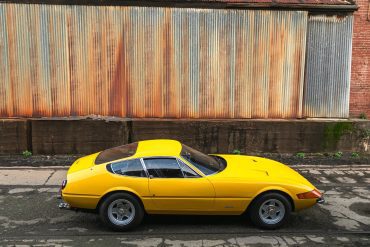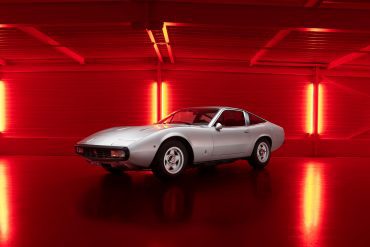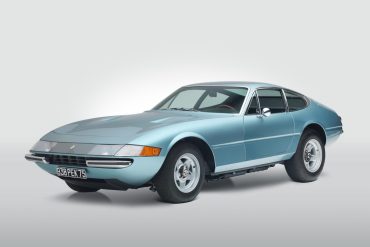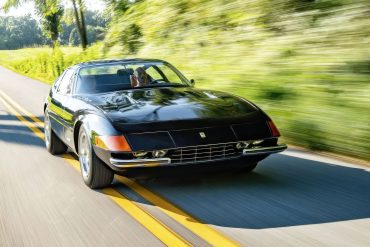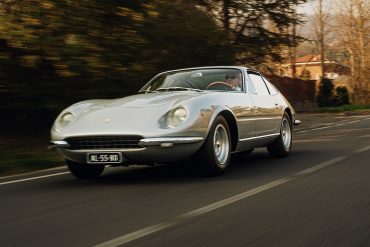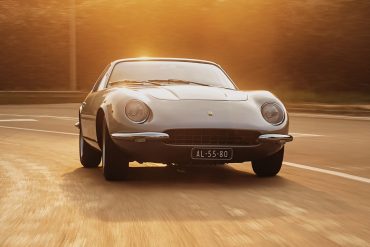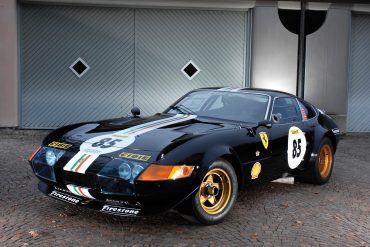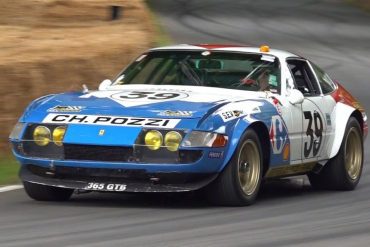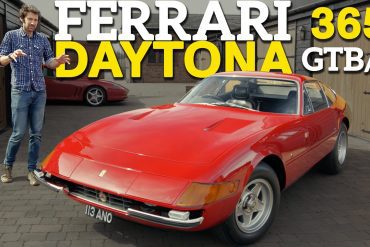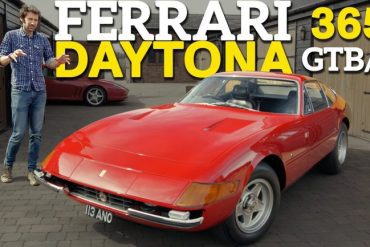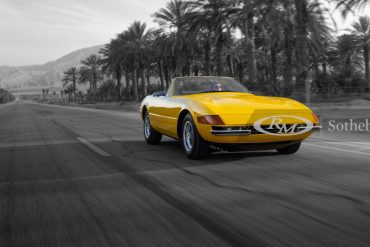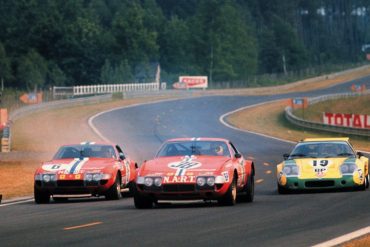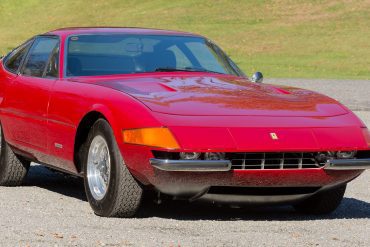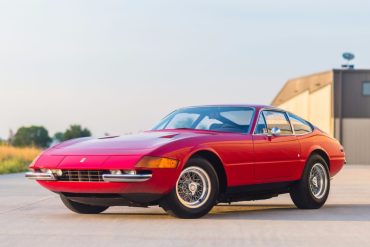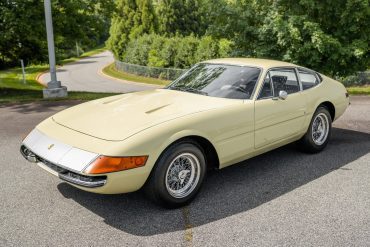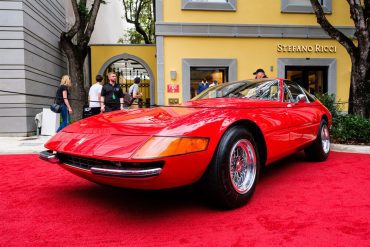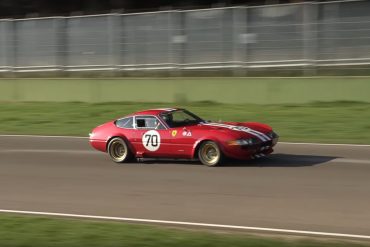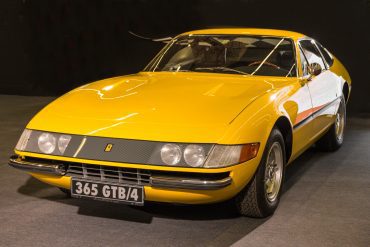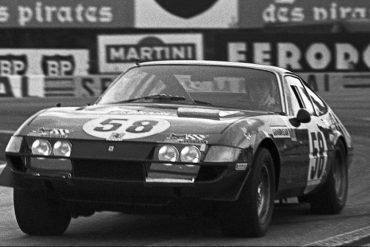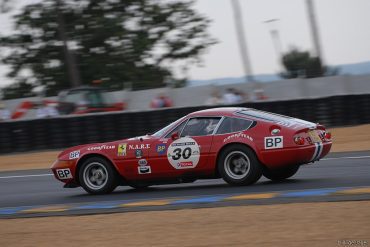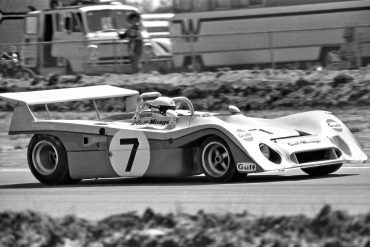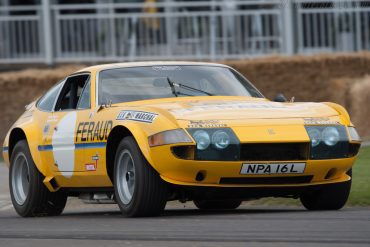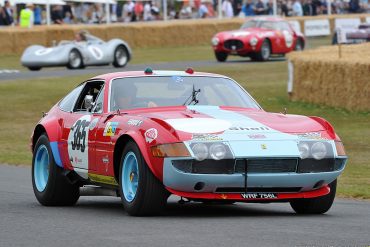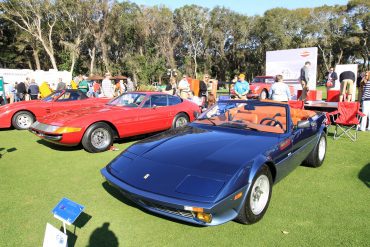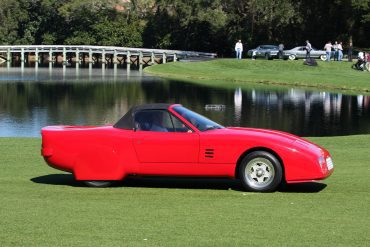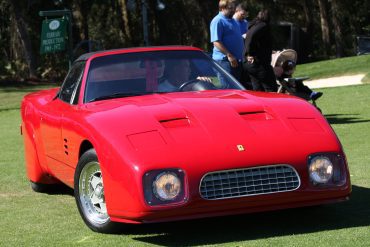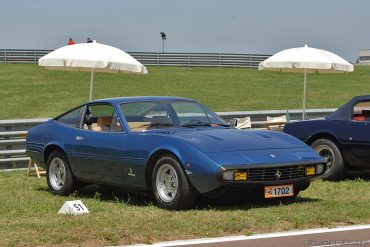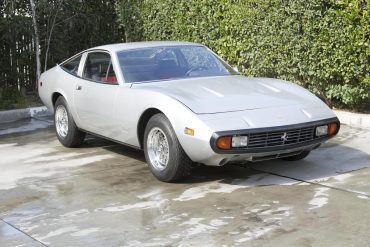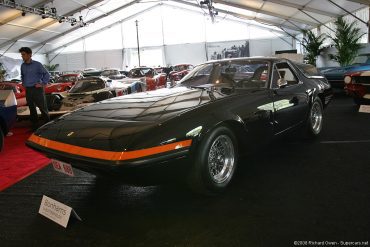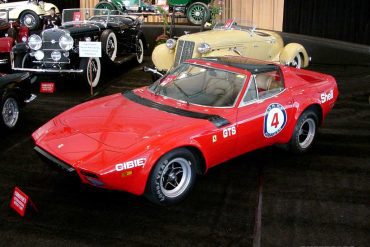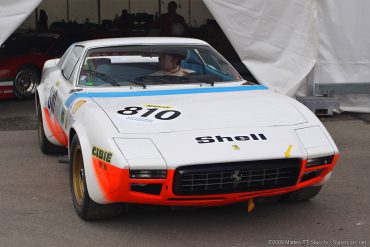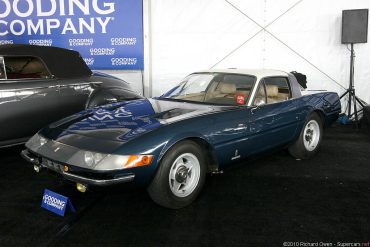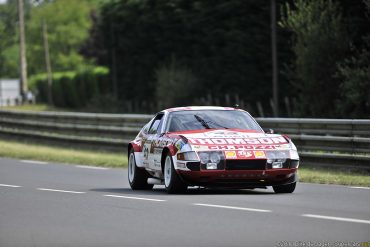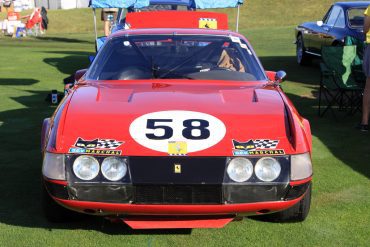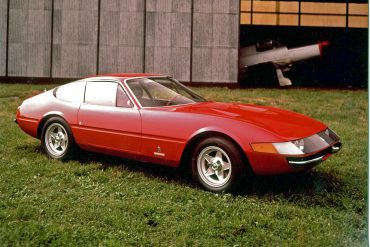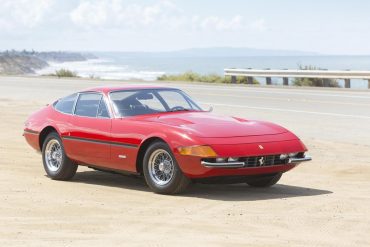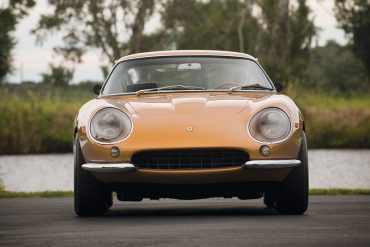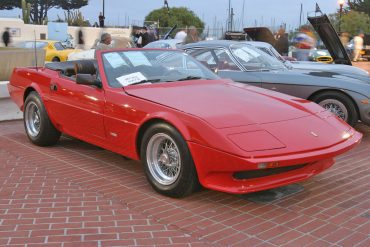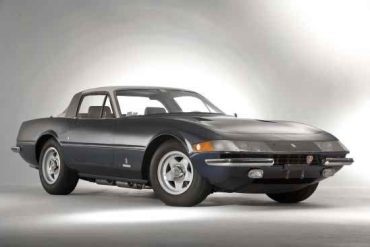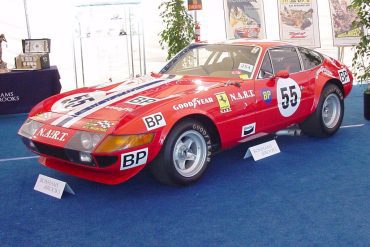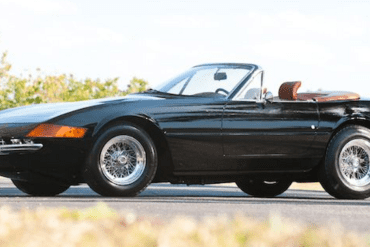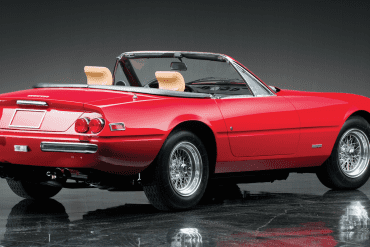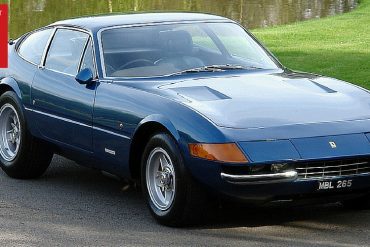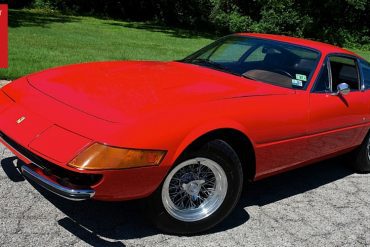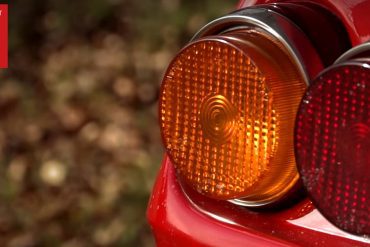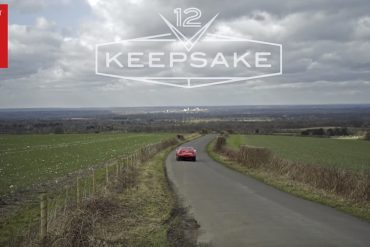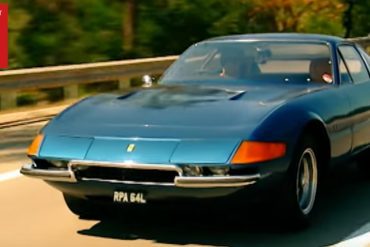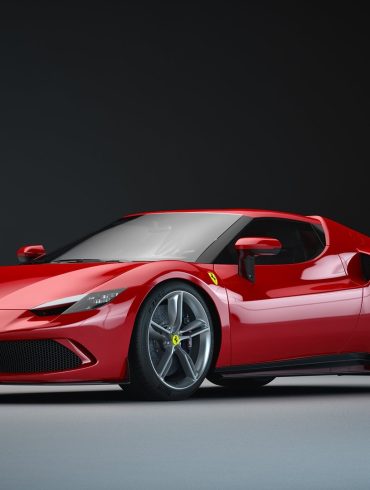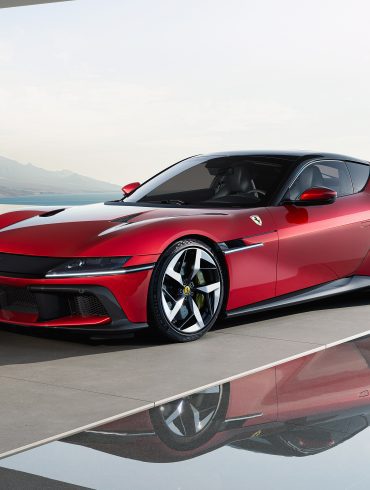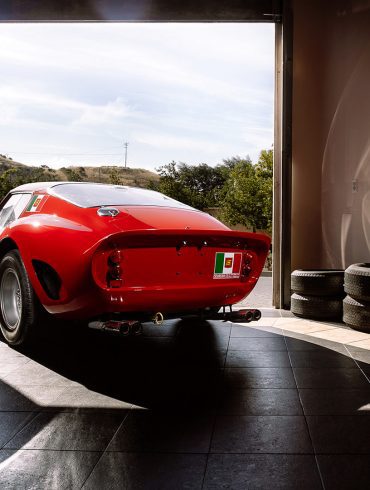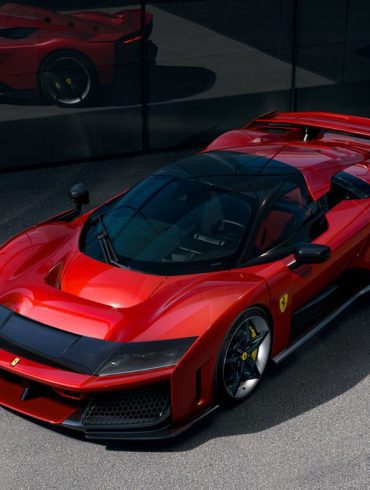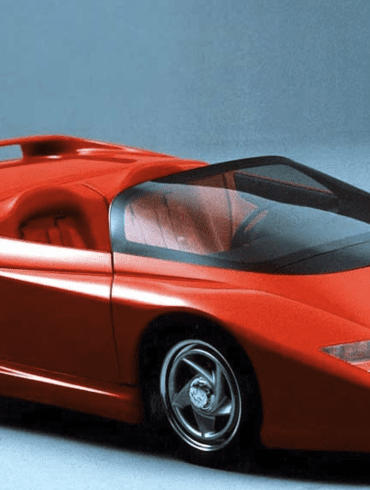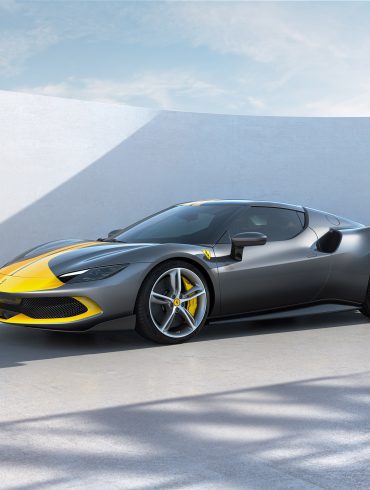Ferrari Daytona
Ultimate Guide
The Ferrari Daytona is a two-seat grand tourer produced by Ferrari from 1968 to 1973. It was introduced at the Paris Auto Salon in 1968 to replace the 275 GTB/4, and featured the 275's Colombo V12 with a larger cylinder bore for 4,390 cc (4.4 L; 267.9 cu in). It was offered in berlinetta and spyder forms. The car came in two variants: the 365 GTB/4 coupe, and the 365 GTS/4 convertible.
Overview / Variants / Models In-Depth / Featured Stories / Videos / Images / More Updates
The Ferrari Daytona (1968–1973): A High-Performance Icon
The Ferrari Daytona, officially named the 365 GTB/4 (and 365 GTS/4 for the convertible), stands as one of the most celebrated cars in Ferrari's history.
Unveiled at the 1968 Paris Motor Show, the Daytona marked the culmination of Ferrari’s front-engine V12 grand tourers before the brand shifted focus to mid-engine layouts for its flagship sports cars. Known for its timeless design, incredible performance, and cultural impact, the Daytona remains a symbol of 1960s and 1970s automotive excellence.
This article delves into the history, model variants, performance capabilities, critical reception, and enduring legacy of the Ferrari Daytona.
The Birth of a Legend
The Ferrari 365 GTB/4 earned its unofficial nickname “Daytona” after Ferrari’s 1-2-3 finish at the 1967 24 Hours of Daytona. While the name was never officially adopted by Ferrari, it became synonymous with the car and underscored its racing pedigree.
The Daytona was designed as a successor to the 275 GTB/4, addressing the increasing competition from Lamborghini’s groundbreaking Miura, which had introduced a mid-engine layout. Despite the growing popularity of mid-engine supercars, Ferrari opted to retain a traditional front-engine, rear-wheel-drive configuration for the Daytona, emphasizing its role as a high-performance grand tourer.
Model Variants: GTB/4 and GTS/4
Ferrari 365 GTB/4 (Berlinetta)
The 365 GTB/4 coupe, often referred to as the "hardtop," featured a striking design by Leonardo Fioravanti of Pininfarina. Its aggressive, angular profile was a departure from the softer lines of earlier Ferraris, signaling a new era for the brand.
Engine: 4.4-liter Colombo V12 producing 352 horsepower.
Performance: 0-60 mph in 5.4 seconds and a top speed of 174 mph, making it one of the fastest cars of its era.
Styling: Early models featured Plexiglass-covered headlights, which were later replaced with pop-up headlights to comply with U.S. regulations.
Ferrari 365 GTS/4 (Spider)
Introduced in 1969, the 365 GTS/4 was the convertible version of the Daytona, offering open-top motoring while retaining the coupe’s performance and styling.
Key Features: The GTS/4 retained the same mechanicals as the GTB/4 but offered a folding soft top and slightly revised rear bodywork.
Production: Only 122 GTS/4 units were built, making it one of the rarest and most sought-after Ferraris.
A Benchmark for Speed
The Ferrari Daytona was equipped with a naturally aspirated 4.4-liter V12 engine featuring six Weber carburetors, delivering a thrilling driving experience. Paired with a five-speed manual transmission and a rear-mounted transaxle, the Daytona achieved near-perfect weight distribution, enhancing its handling.
Acceleration and Speed: With a top speed of 174 mph, the Daytona was the fastest production car of its time, a title confirmed by independent testing.
Handling and Driving Dynamics: Despite its weight, the Daytona was praised for its sharp handling and responsiveness, with a suspension setup that balanced comfort and performance.
Braking and Tires: Equipped with ventilated disc brakes and wide tires, the Daytona provided confident stopping power and excellent grip for high-speed driving.
Car and Driver described the Daytona as “a car that marries brute force with sophistication,” while Road & Track noted that it “delivers a driving experience unlike any other.”
A Star of the Era
Upon its release, the Daytona received widespread acclaim for its performance, design, and craftsmanship. It was hailed as the pinnacle of Ferrari’s front-engine V12 grand tourers and a fitting rival to the Lamborghini Miura.
Critics praised the Daytona’s versatility, describing it as a car equally capable of spirited driving and comfortable long-distance touring. Its combination of speed, luxury, and style made it a favorite among enthusiasts and celebrities, including Paul Newman and Miles Davis.
However, some purists criticized Ferrari for sticking with a front-engine layout at a time when mid-engine designs were gaining prominence. Despite this, the Daytona’s overwhelming performance and charm silenced most skeptics.
A Timeless Masterpiece
The Ferrari Daytona is widely regarded as one of the most iconic cars of its era, influencing future Ferrari designs and solidifying its place in automotive history. Its cultural impact extends beyond the automotive world, with appearances in films, television, and music.
Cultural Significance: The Daytona became a symbol of 1970s sophistication, famously featured in the television series Miami Vice (albeit as a replica).
Collector Value: The rarity of the GTS/4 and the desirability of the GTB/4 have made both models highly sought after, with prices for well-preserved examples reaching millions of dollars.
Historical Importance: As the last Ferrari grand tourer powered by a front-mounted V12 before the mid-engine era, the Daytona represents the end of an era and the height of Ferrari’s traditional design philosophy.
The Enduring Appeal of the Daytona
The Ferrari Daytona remains a shining example of Ferrari’s ability to blend performance, elegance, and innovation. Whether as a sleek Berlinetta or a rare Spider, the Daytona continues to captivate collectors and enthusiasts alike. Its legacy as one of the fastest and most beautiful cars of its time ensures its place as a cornerstone of Ferrari’s illustrious history.
For those fortunate enough to experience it, the Daytona offers a connection to an era when driving was as much about emotion as it was about engineering. As a masterpiece of design and performance, the Ferrari Daytona is truly a legend that endures.
Ferrari Daytona Specs
Manufacturer: Ferrari
Production: GTB/4: 1968–1973, GTS/4: 1971–1973
Produced: GTB/4: 1,284 units, GTS/4: 122 units
Designer: Leonardo Fioravanti
Class: Sports car
Body style: GTB/4: berlinetta, GTS/4: spider
Layout: Front-mid engine, RWD
Engine: 4.4 L Tipo 251 Colombo V12
Transmission: 5-speed manual
Wheelbase: 2,400 mm (94.5 in)
Length: 4,425 mm (174.2 in)
Width: 1,760 mm (69.3 in)
Height: 1,245 mm (49.0 in)
Kerb weight: 1,200 kg (2,646 lb) (GTB/4, dry)
Predecessor: GTB/4: Ferrari 275 GTB/4, GTS/4: Ferrari 365 GTS
Successor: GTB/4: Ferrari 365 GT4 BB, GTB/4 "Daytona"
Did You Know?
While officially the 365 GTB/4, the "Daytona" moniker stuck after Ferrari DOMINATED the 1967 24 Hours of Daytona, taking the top THREE spots. A legendary win on Ford's home turf!
In 1971, a modified Daytona hit a record-breaking 174 mph average speed over a flying kilometer. For a production car of that era, that was insanely fast.
Only 122 Daytona Spyders were ever made. That makes them incredibly rare and highly sought-after by collectors today.
The Daytona is a magnificent car, a true successor to the 275 GTB/4. It's fast, comfortable, and beautifully balanced
Road & Track (1969)
Ferrari Daytona Model Variants
The Ferrari Daytona, officially the 365 GTB/4, was a grand tourer produced from 1968 to 1973. It came in two main forms: the 365 GTB/4 Berlinetta (a sleek coupe) and the 365 GTS/4 Spyder (a rare convertible). Both were powered by a front-mounted 4.4-liter V12, making them formidable performers and icons of 1970s automotive style. There were also competition models, with the official cars built in three batches of five cars each, in 1971, 1972 and 1973.
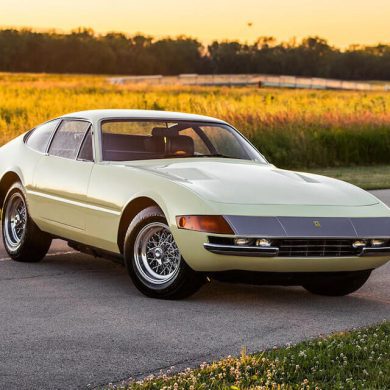
Ferrari 365 GTB/4 Daytona
Type: Production Car
Years: 1968 - 1973
Production: 1,284 units
Engine: 4.4 L Colombo V12
Power: 347 bhp @ 7500 rpm
Torque: 318 lb/ft @ 5500 rpm
0-60 mph: 5.4 seconds
Top Speed: 173 mph
The last classic-era, front engine, V12 Ferrari was the 365 GTB/4. The press nicknamed it the Daytona much to the disdain of Enzo. Its 170 mph top speed became a supercar benchmark. Under the hood was a 4.4 liter V12. This tremendous speed was emphasized in the first ever Cannonball run when Brock Yates and Dan Gurney piloted their Daytona during the race. Road & Track called it “the best sports car in the world”. Learn more.
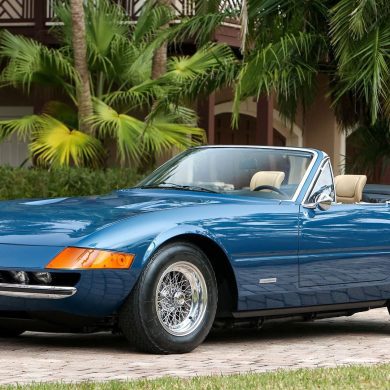
Ferrari 365 GTB/4 Daytona Spider
Type: Production Car
Years: 1971 – 1973
Production: 122 units
Engine: 2.4 L Dino 65° V6
Power: 353.0 bhp @ 7500 rpm
Torque: 319.0 ft lbs @ 5000 rpm
0-60 mph: 6.5 seconds
Top Speed: 173 mph
Ferrari had Pininfarina design the Daytona Spider and limited production to just 122 cars. At the time, the Daytona was known as the top dog. Scaglietti was careful in transforming the 365 into a Spider. It required several modifications that replaced the Coupes fiberglass inner fenders and rear bulkhead with steel counterparts. There is added structural rigidity to help it stay stiff. Learn more.
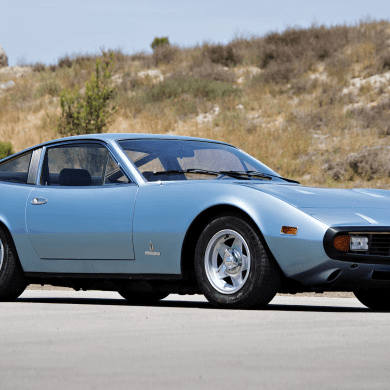
Ferrari 365 GTC/4
Type: Production Car
Years: 1971 - 1972
Production: 505 units
Engine: 4.4 L Colombo V12
Power: 340 bhp @ 6200 rpm
Torque: 318 lb/ft @ 4000 rpm
0-60 mph: 6.7 seconds
Top Speed: 163 mph
Ferrari debuted the 365 GTC/4 model at the Geneva Motor Show in March, 1971. It wasn't designed as a replacement for the 365 GT2+2, instead it was Ferrari's practical 2-seat coupe, similar to the previous 330 GTC and 365 GTC models. The 365 referenced the displacement of a single cylinder while the GTC meant it was a Grand Touring (road) car in Coupe (2 door hardtop) configuration and the 4 was camshaft cylinder heads. Learn more.
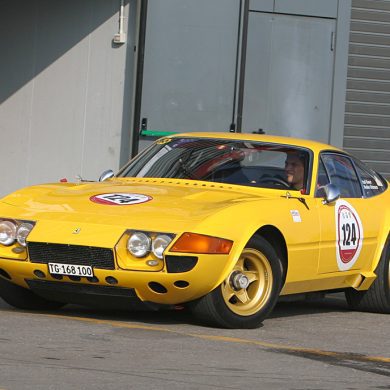
Ferrari 365 GTB/4 Daytona Competizione S1
Type: Race Car
Years: 1971
Production: 5 units
Engine: 4.4 L Colombo V12
Power: 402 bhp @ 8300 rpm
Torque: N/A
0-60 mph: N/A
Top Speed: 183 mph
The Competizione S1 was the first iteration of the Daytona built for racing. These cars were modified with lightweight aluminum panels, Plexiglas windows, and stripped-down interiors to shed weight. Aerodynamic enhancements included a small chin spoiler and a revised rear end. The 4.4-liter V12 engine received tuning upgrades, power now at 402 bhp. S1 cars proved competitive in endurance, including Le Mans and the Daytona 24 Hours. Learn more.

Ferrari 365 GTB/4 Daytona Competizione S2
Type: Race Car
Years: 1972
Production: 5 units
Engine: 4.4 L Colombo V12
Power: 430 bhp @ 7800 rpm
Torque: 340 ft lbs @ 5500 rpm
0-60 mph: 5.8 seconds
Top Speed: 184 mph
The Competizione S2 took the racing modifications further. The bodywork was even more aggressively lightweight, with fiberglass replacing some aluminum panels. The engine received further tuning, now producing around 430 bhp. Larger brakes and wider wheels improved handling and stopping power. Only five S2 cars were built, making them incredibly rare and valuable today. Learn more.
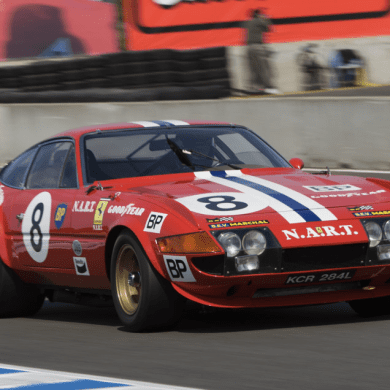
Ferrari 365 GTB/4 Daytona Competizione S3
Type: Race Car
Years: 1973
Production: 5 units
Engine: 4.4 L Colombo V12
Power: 450 bhp
Torque: N/A
0-60 mph: N/A
Top Speed: 180 mph
The final evolution of the Daytona Competizione, the S3, saw further refinements to the aerodynamics and engine. A large rear wing and prominent front splitter were added, increasing downforce and stability at high speeds. The V12 engine was further tweaked, with some versions producing close to 450 bhp. The S3 cars continued to be competitive in endurance racing, achieving notable successes throughout the 1970s. Learn more.
A Note On The Ferrari 365 GTC/4
Ferrari debuted the 365 GTC/4 model at the Geneva Motor Show in March, 1971. Although the car sports two small rear "seats", it wasn't designed as a replacement for the longer 4-seat 365 GT2+2, instead it was Ferrari's newest civilized and practical 2-seat coupe, similar to the previous 330 GTC and 365 GTC models. Keeping with Ferrari's engine-centric naming scheme of the time, the 365 referenced the displacement (in cubic centimeters) of a single cylinder while the GTC meant it was a Grand Touring (road) car in Coupe (2 door hardtop) configuration and the 4 bragged of the newer 4 camshaft cylinder heads.
Mechanically, the 365 GTC/4 is closely related to the 365 GTB/4 "Daytona" but it presented its own innovations, including power assisted steering, a large trunk, and side draft carburetors which allow a lower hood line. As Road and Track said in its July 1972 review of the car: "In all, a graceful, clean and understated design with subtleties one discovers only by looking it over carefully. One might say this model is a Ferrari for the mature enthusiast." Or, Winston Goodfellow was quoted in the Forza 365 GTC/4 Buyer's Guide as saying: "The styling is so elegantly low-key that the model is often overlooked."
Production started in late 1971 and ran for 500 units through the beginning of 1973 on the same assembly line as the 365 GTB/4 and parallel to the line producing the 246 GT Dino. Excluding the prototype (s/n 13741), GTC/4 serial numbers range from 14277 to 16349. As with all Enzo-era Ferrari road cars, the serial numbers end in an odd integer and Daytona and Dino models of the era also fall within that range. 3,761 Dinos were produced from 1969-1974, along with 1,406 Daytonas, making the GTC/4 three times as rare and only half the price of a Daytona today. (In 1972 the GTC/4 was $3,000 more expensive than the GTB/4).
The 365 GTC/4's body lines were drawn by Filippo Sapino at Carrozzeria Pininfarina in the first half of 1970. By September, a prototype was ripping up and down the hills around Modena yet Ferrari did not mention the car in their December, 1970 press conference and there was surprisingly little fanfare prior to the 365 GTC/4's introduction as a replacement for the 365 GTC.
The bodywork was not only designed by Pininfarina in Turin but, unlike the Daytona that had its bodies constructed by Scaglietti in Modena, GTC/4 bodies were also built by Pininfarina and then shipped to Maranello for completion. It is widely accepted that Pininfarina built their bodies to a much higher quality standard than Scaglietti. Thus, when comparing a 365 GTC/4 to a 365 GTB/4 of similar age and use, the 365 GTC/4 generally shows less age and wear. The 365 GTC/4 body is finished from steel with fiberglass floor pan, footwells, and firewall bonded to the chassis and an aluminum hood -- all of which resist corrosion.
Some critized the styling, questioning its apparently "un-Ferrari-like" simple appearance. In fact, the Italians nicknamed the 365 GTC/4 "Il Gobbone", or "the humpback" but the body lines have proven themselves graceful and timeless, as so many fine Pininfarina styles do. The main body line is very dominant, an unbroken graceful "S" curve which begins at the low frontal air intake, curving up over the front wheel wells, dipping slightly at the line of the cowl to end in a bold upward sweep along the lower edge of the rear quarter windows where it meets the line which extends the roof in another unbroken plane through the rear window and deck lid.
From a conceptual point of view, the 365 GTC/4 shares the wedge shape of the Daytona, with a long hood and a raked windshield that flows gracefully across the roof before descending across the rear window to the short Kamm tail. From the sides, the lines are extremely clean, elegant, and flowing.
The 365 GTC/4 is a much lower and more exotic looking car than the boxy GT4 2+2s that replaced it, and is more angular and modern looking than the 365 GTC or 365 GT 2+2 models that preceded it. The side profile is low and graceful, without the need for excessive scoops and ducts. The rear three-quarter view of a GTC/4 exudes restrained power and early seventies Pininfarina style.
A number of interesting features were incorporated in the design for the GTC/4 and its lines become more and more attractive the closer they are studied. Most immediately apparent is the distinctive matte black synthetic resin noseband that replaced traditional chrome bumper trim for the front of the car, a detail unique to this model. Indeed, matte black was also used for the rear bumper and tail-light panel. Both features contributed to the refreshing lack of chrome and this cars cleanliness of line, a practice initially begun on the Daytona. While the black bumpers did not meet universal approval, they are quite tasteful compared to the huge units applied to the Lamborghinis of the time. Two other details worthy of mention were the extremely low bonnet with its retractable headlights and that Kamm tail featuring the de-rigueur round Ferrari tail lights, six in number.
Ferrari offered 48 different factory paint colors in the years that the 365 GTC/4 was produced. These colors were available on all Ferrari models at that time: the 365 GTC/4, 365 GTB/4, and Dino 246. It is unknown how many of these colors were actually used on 365 GTC/4 models. In addition, Ferrari would allow any special order paint color a well-heeled buyer desired. Regardless of exterior paint color, all 365 GTC/4s received a matte-black tail light panel treatment.
The Daytona is a car for serious drivers. It demands respect, but rewards you with an unforgettable driving experience
Autocar (1968)


